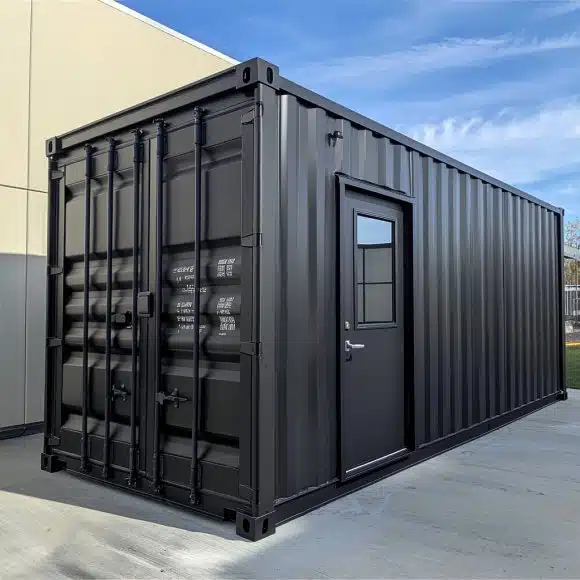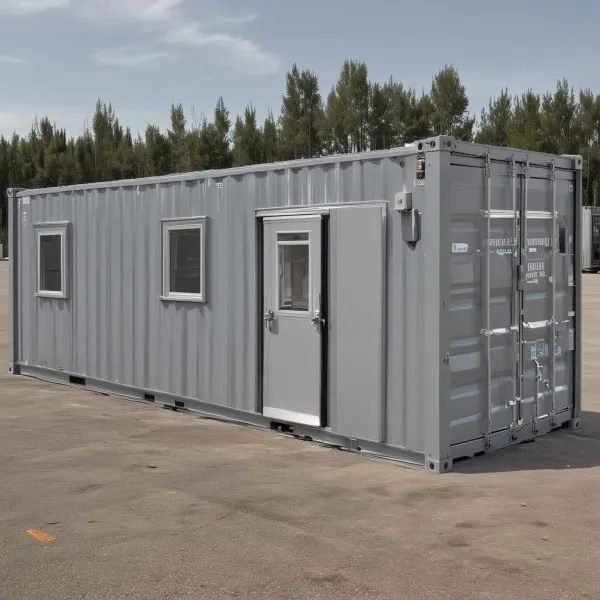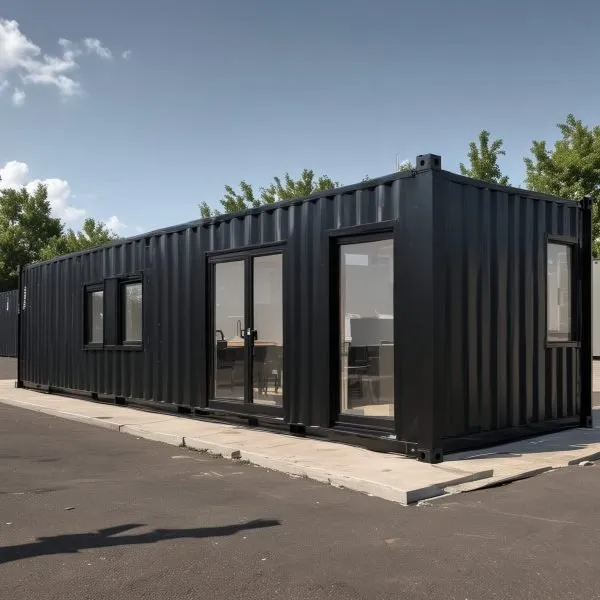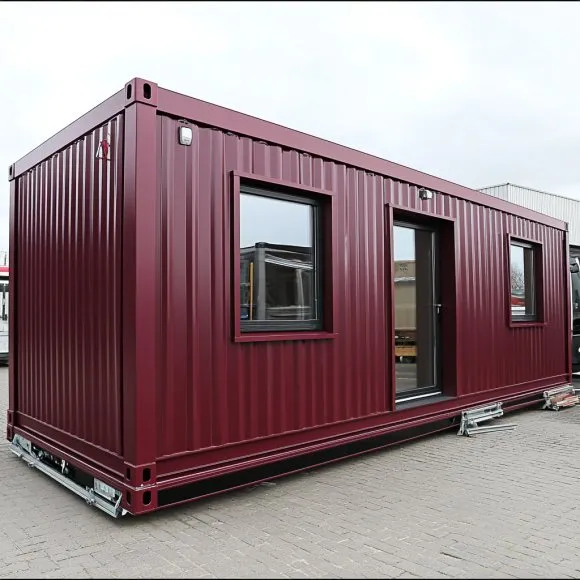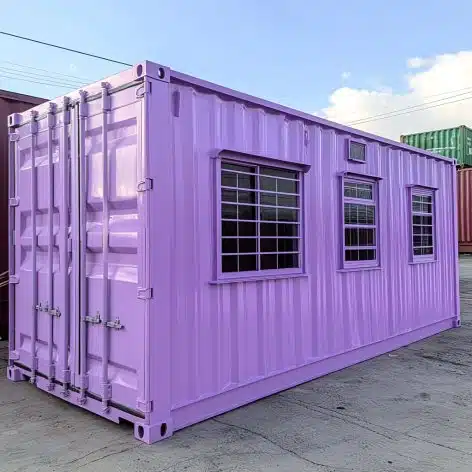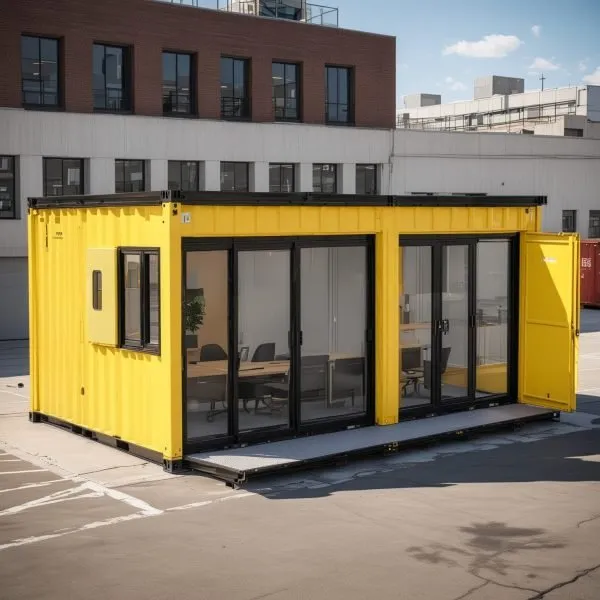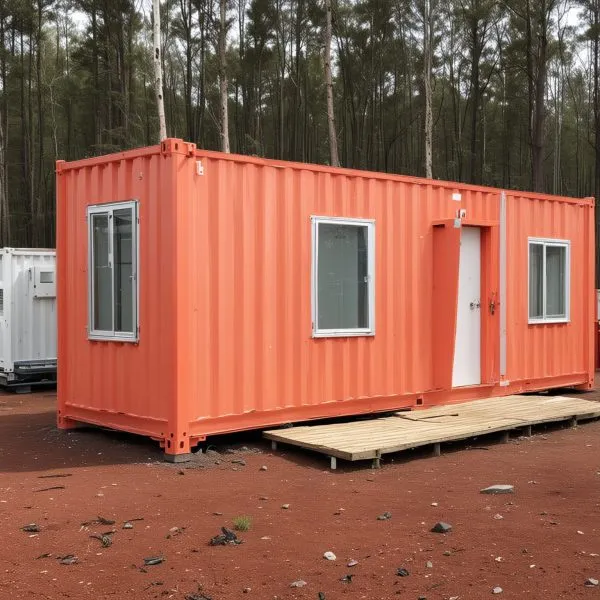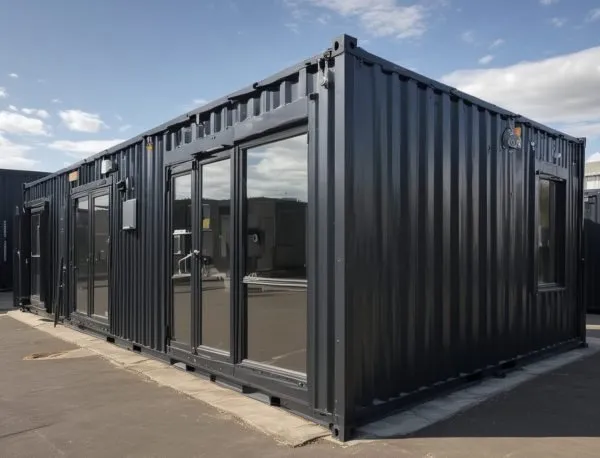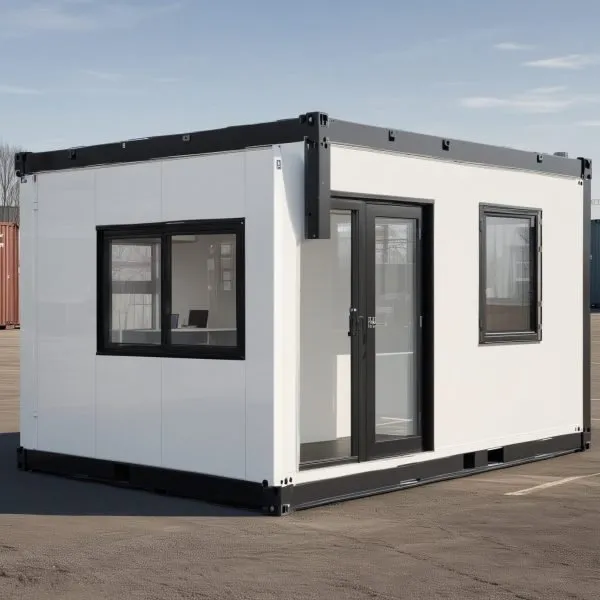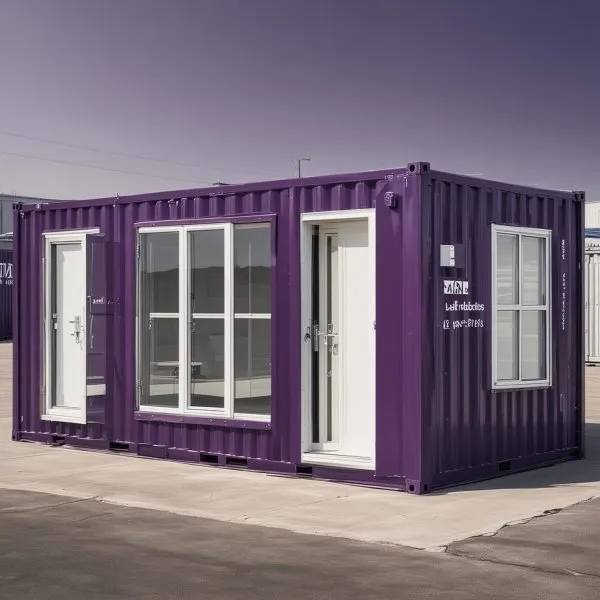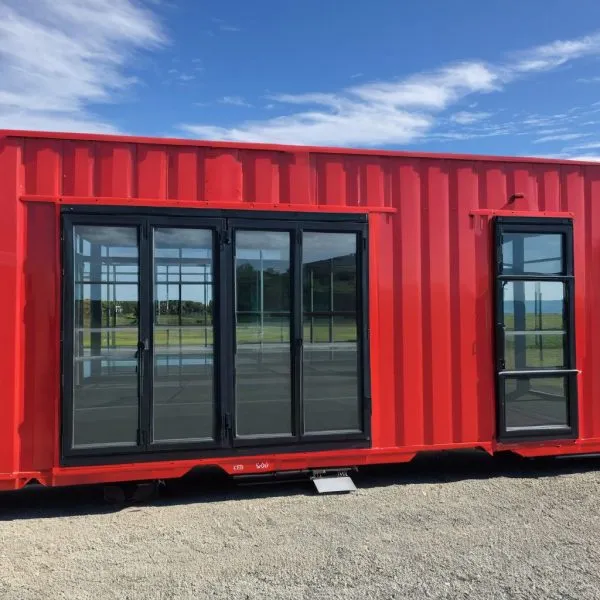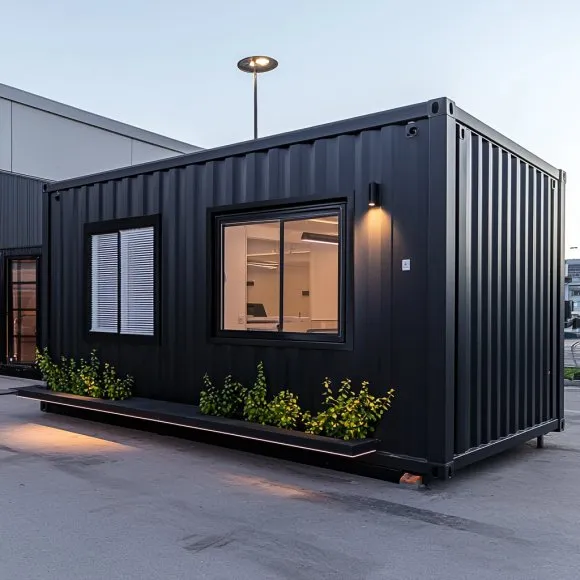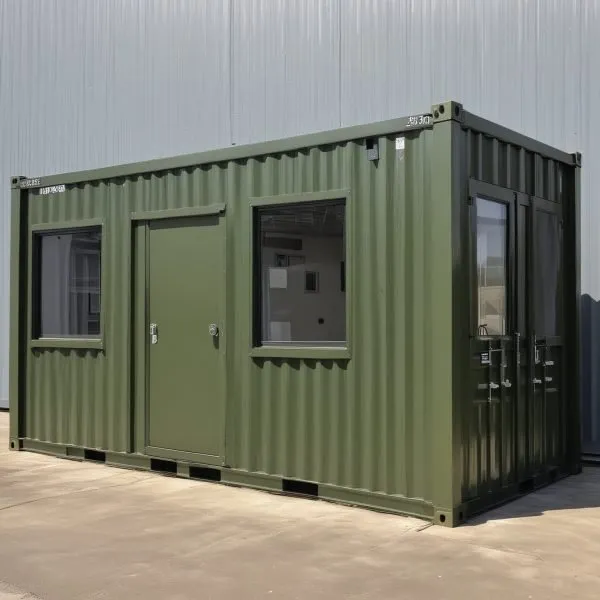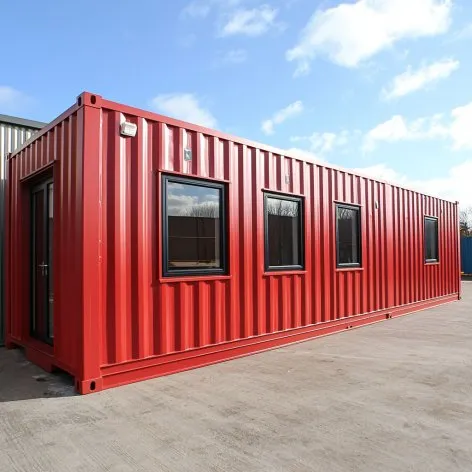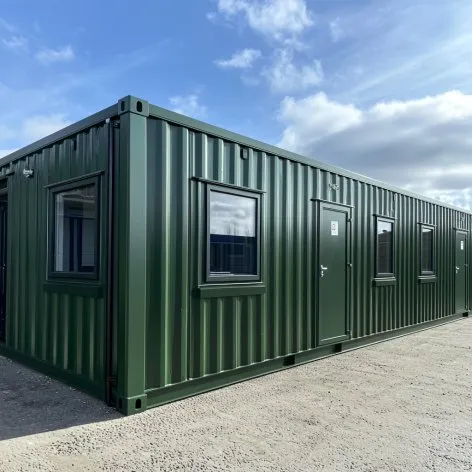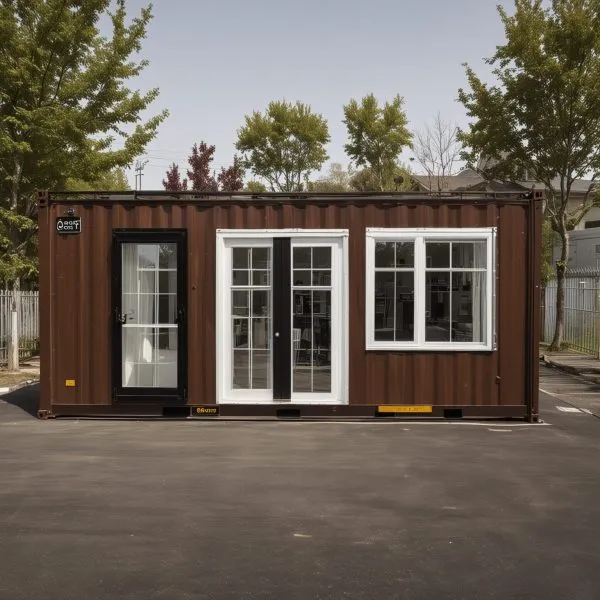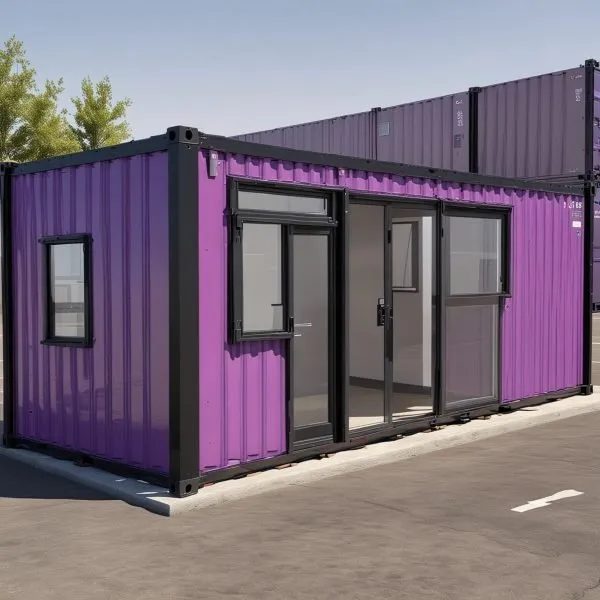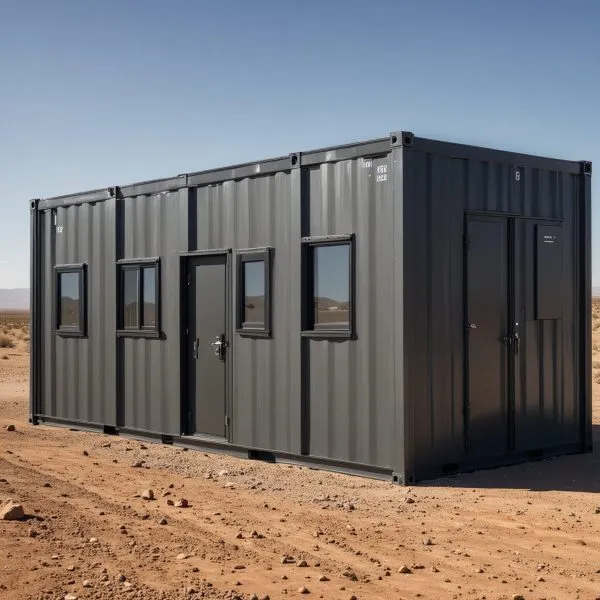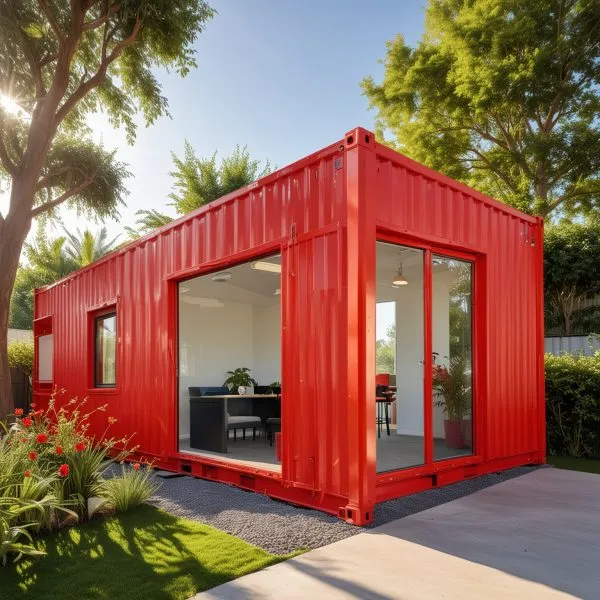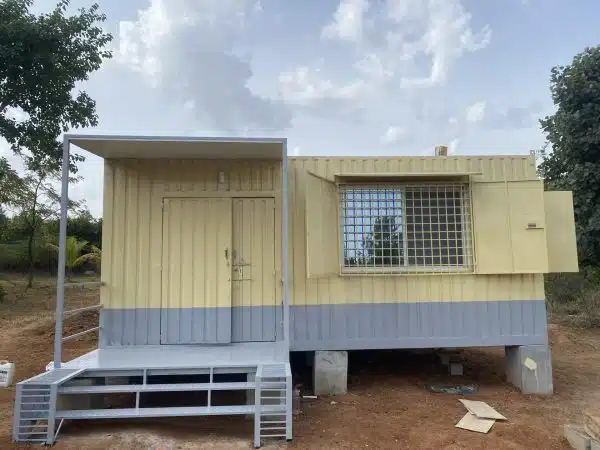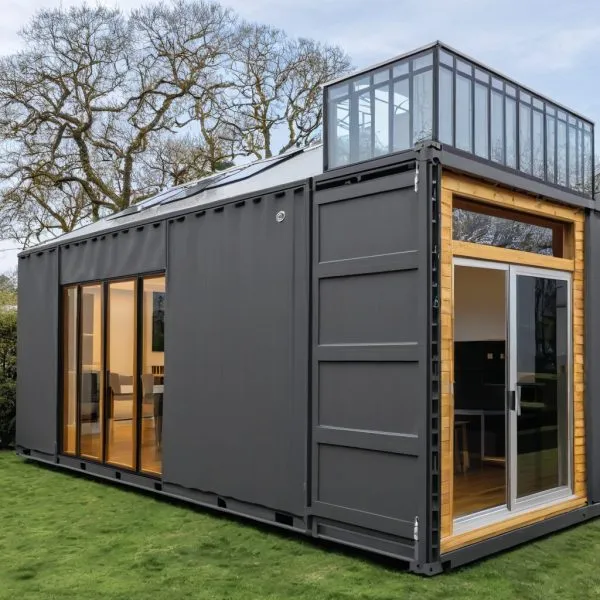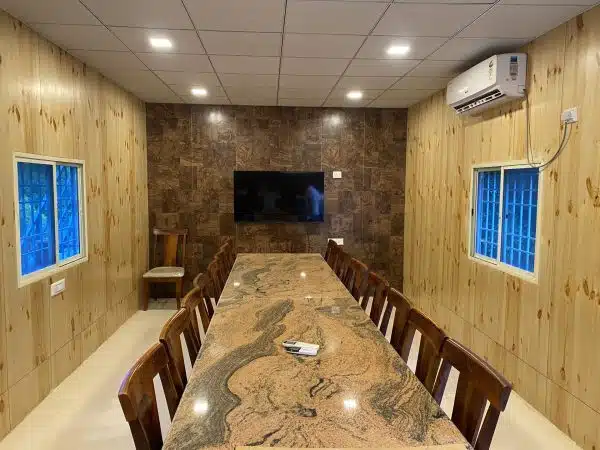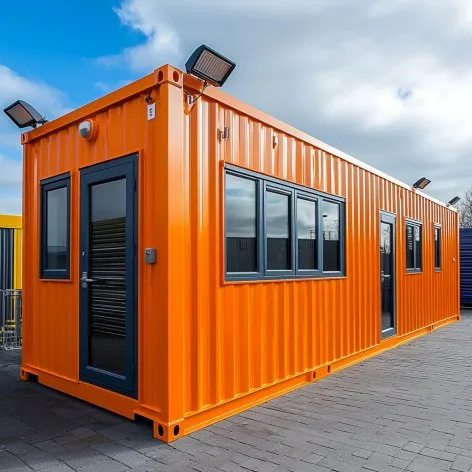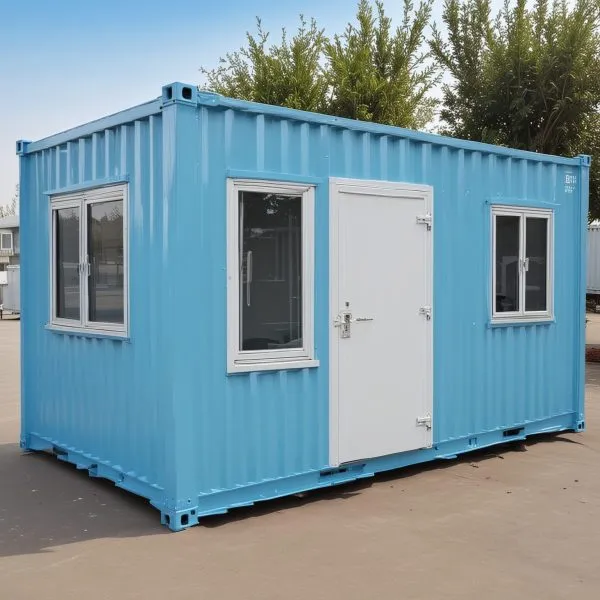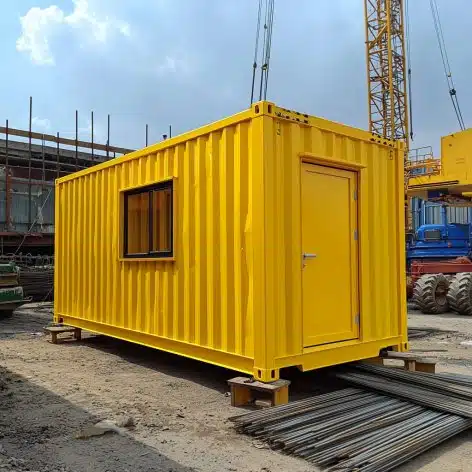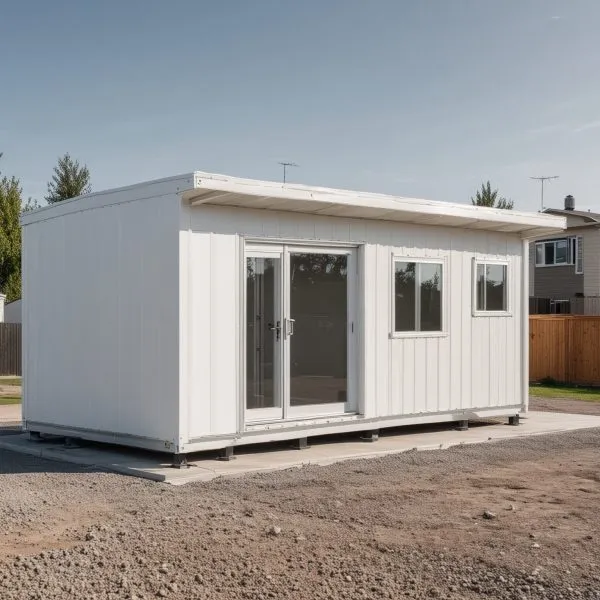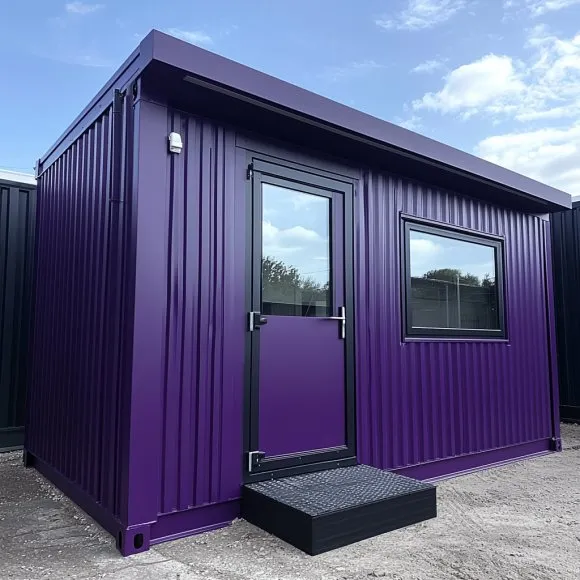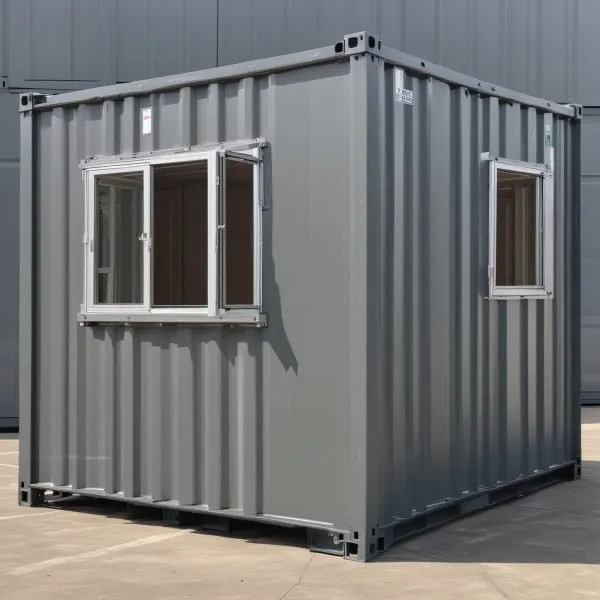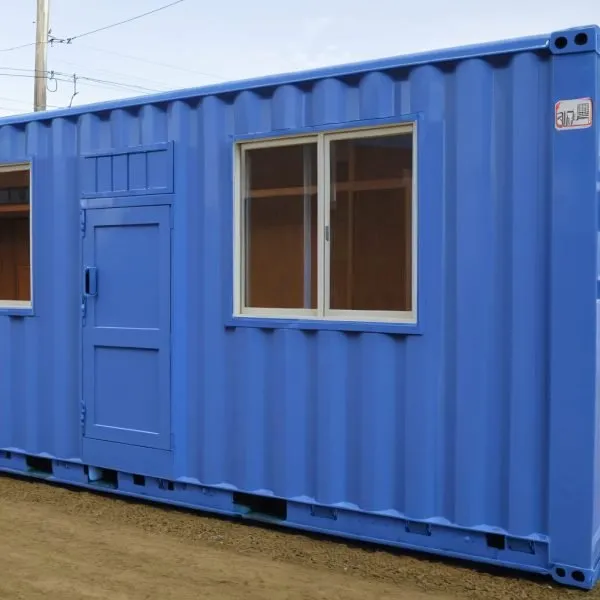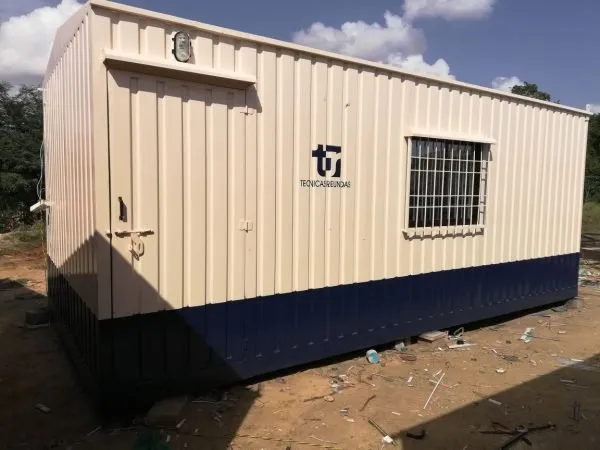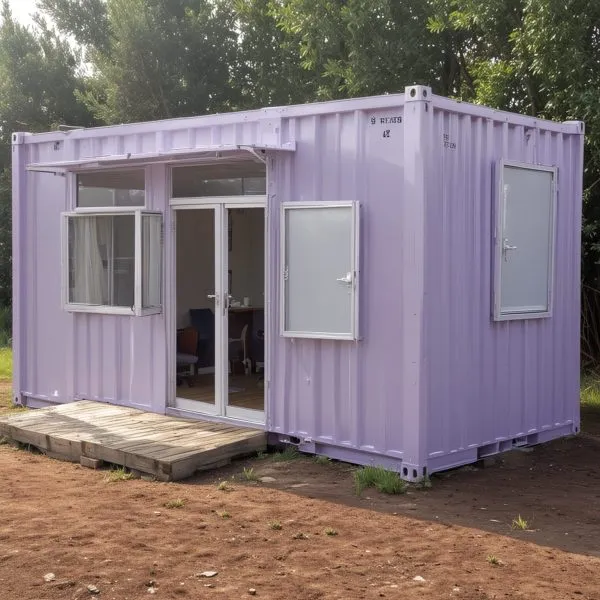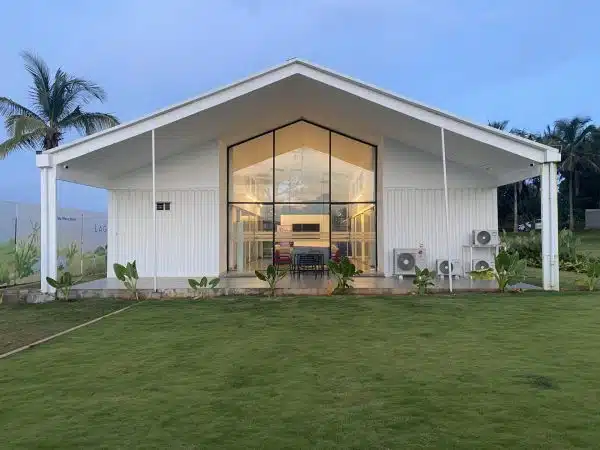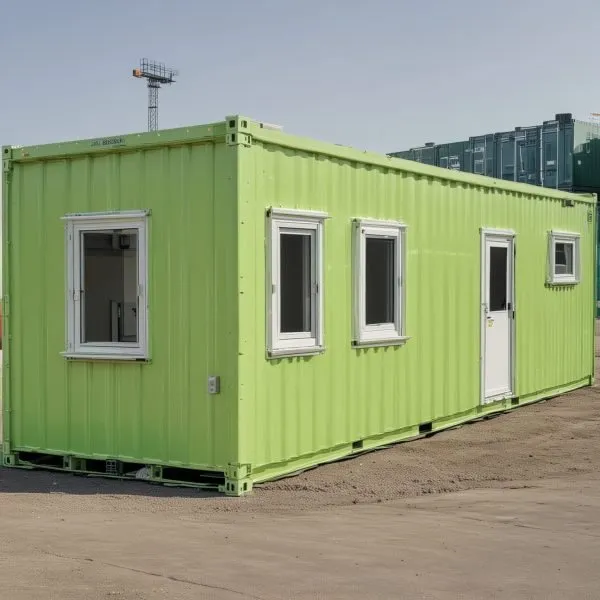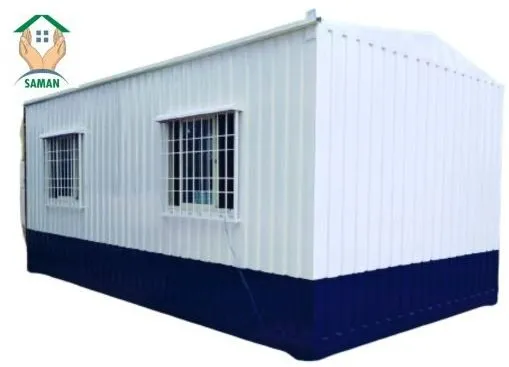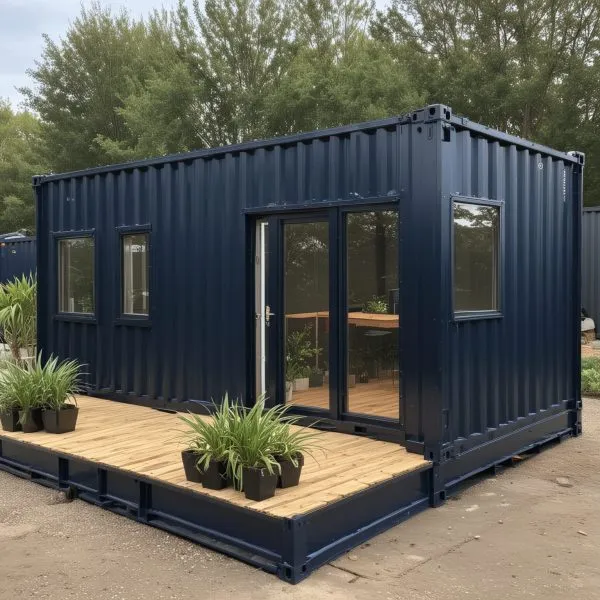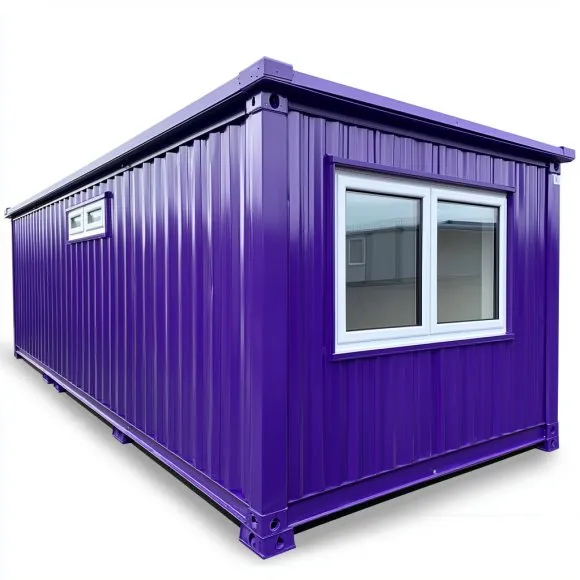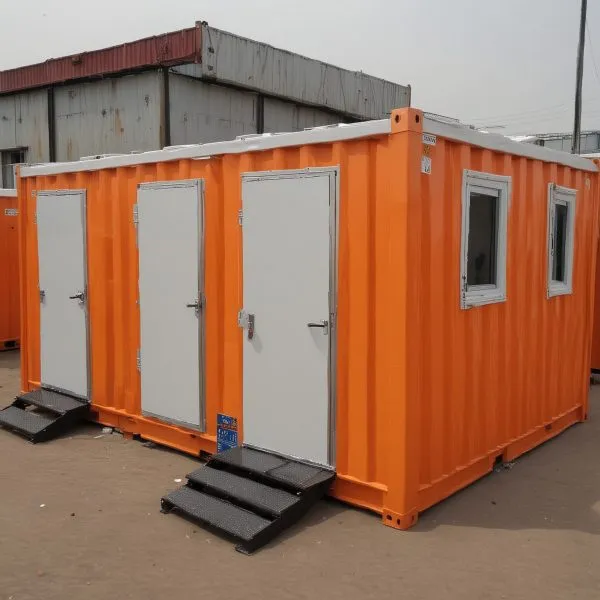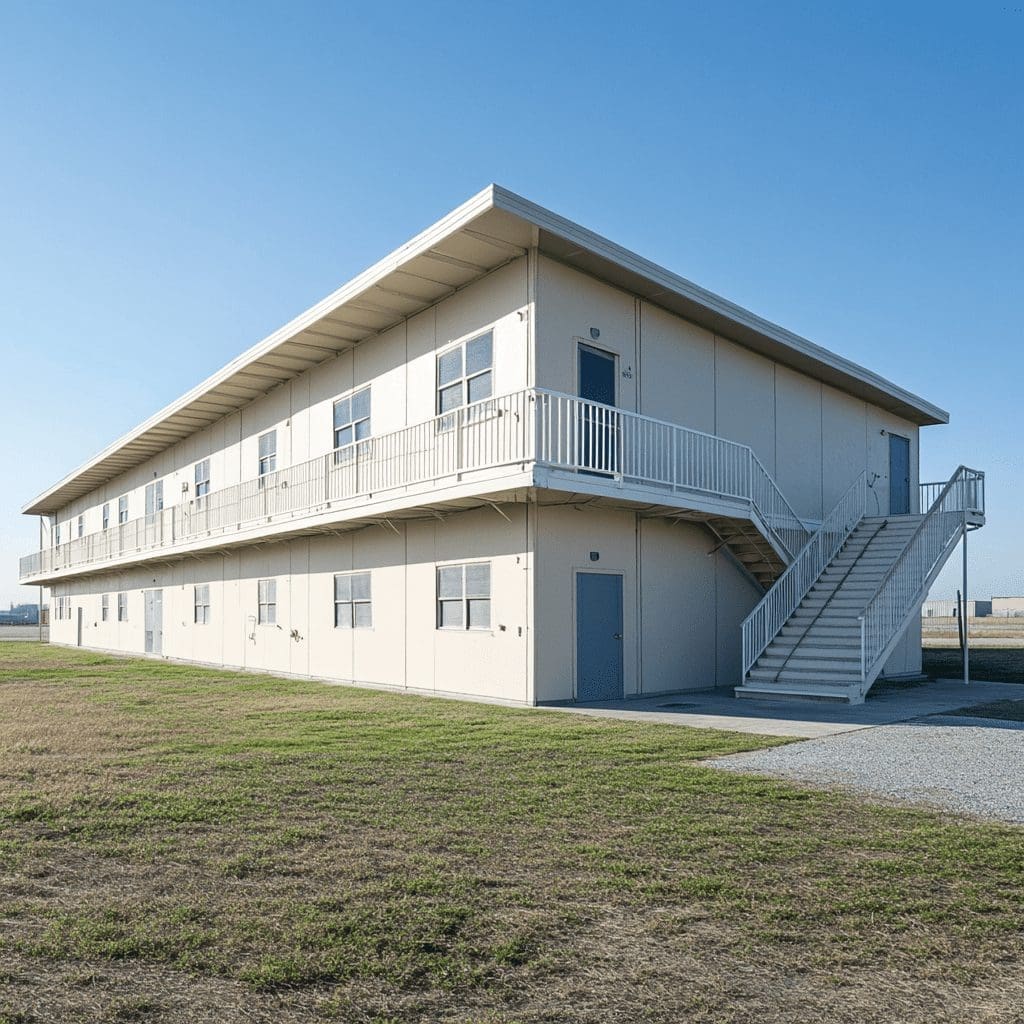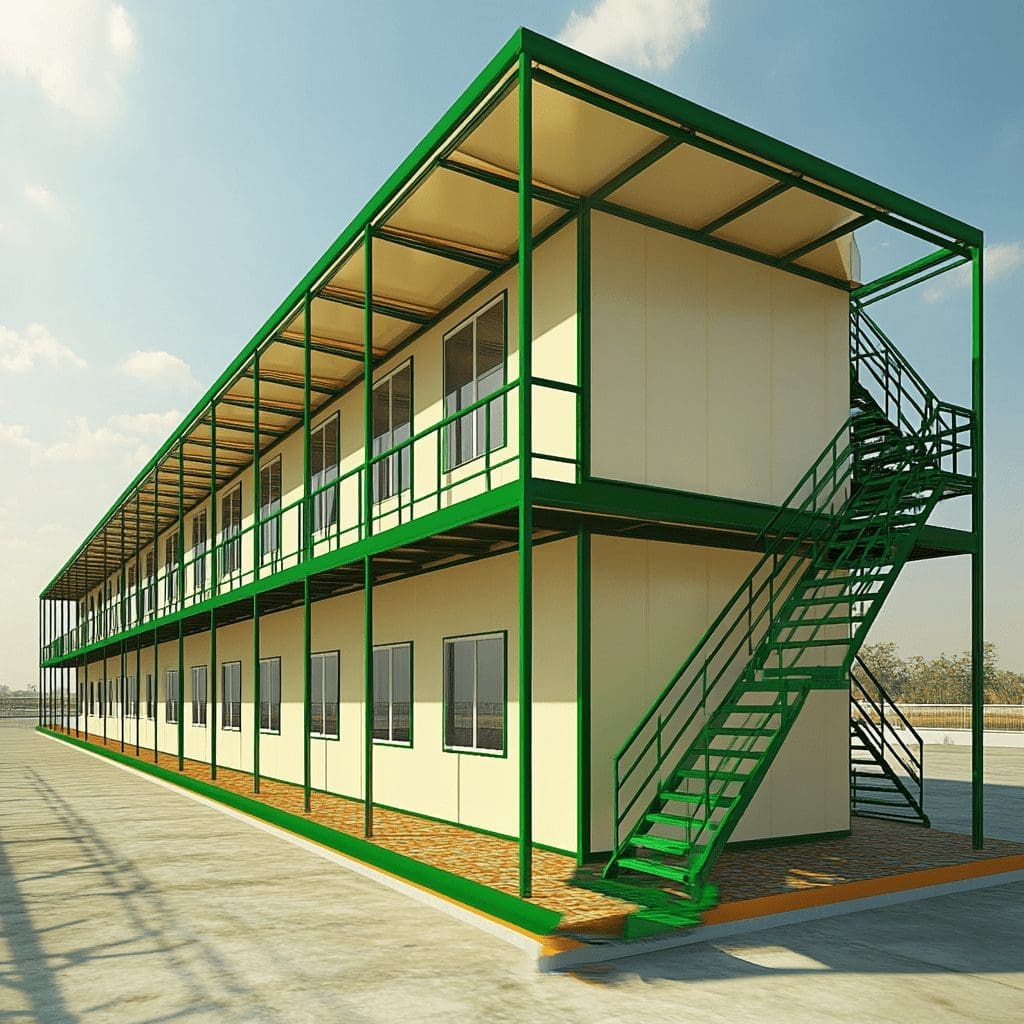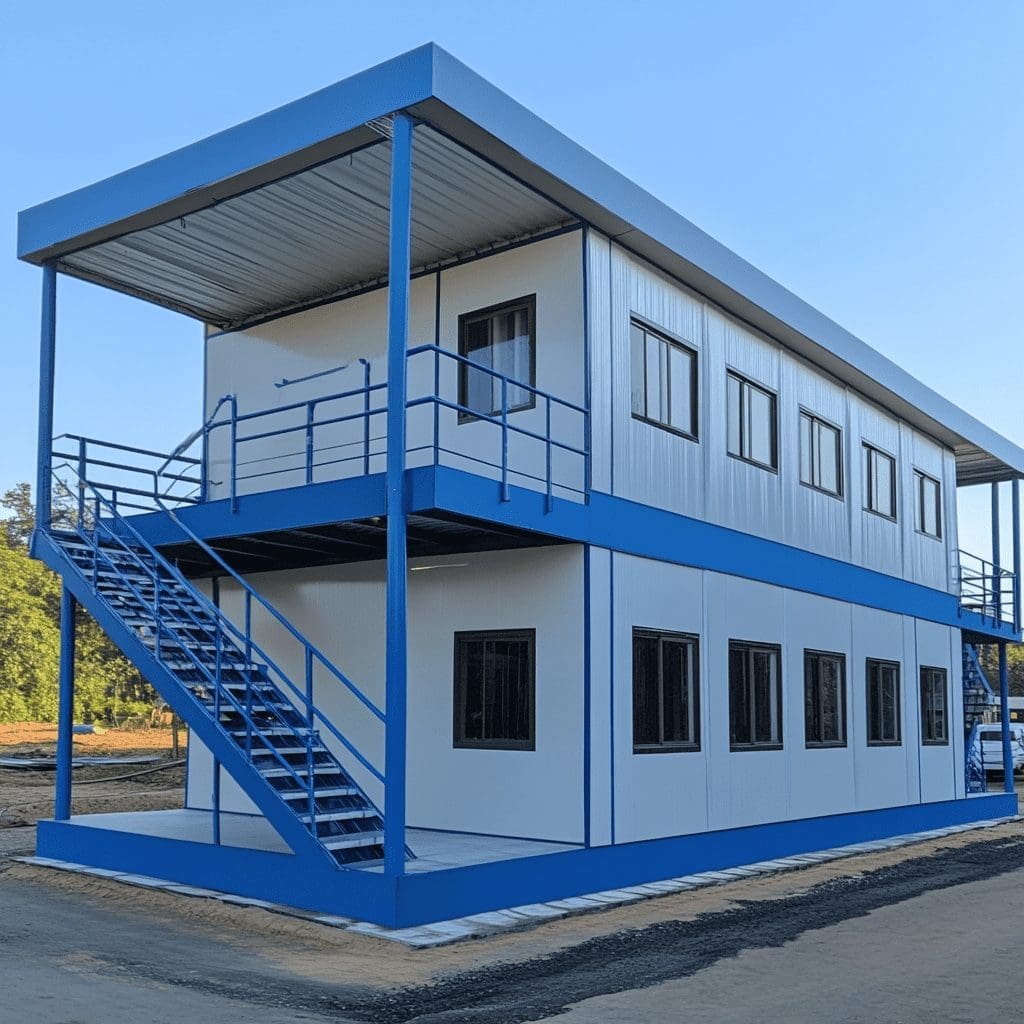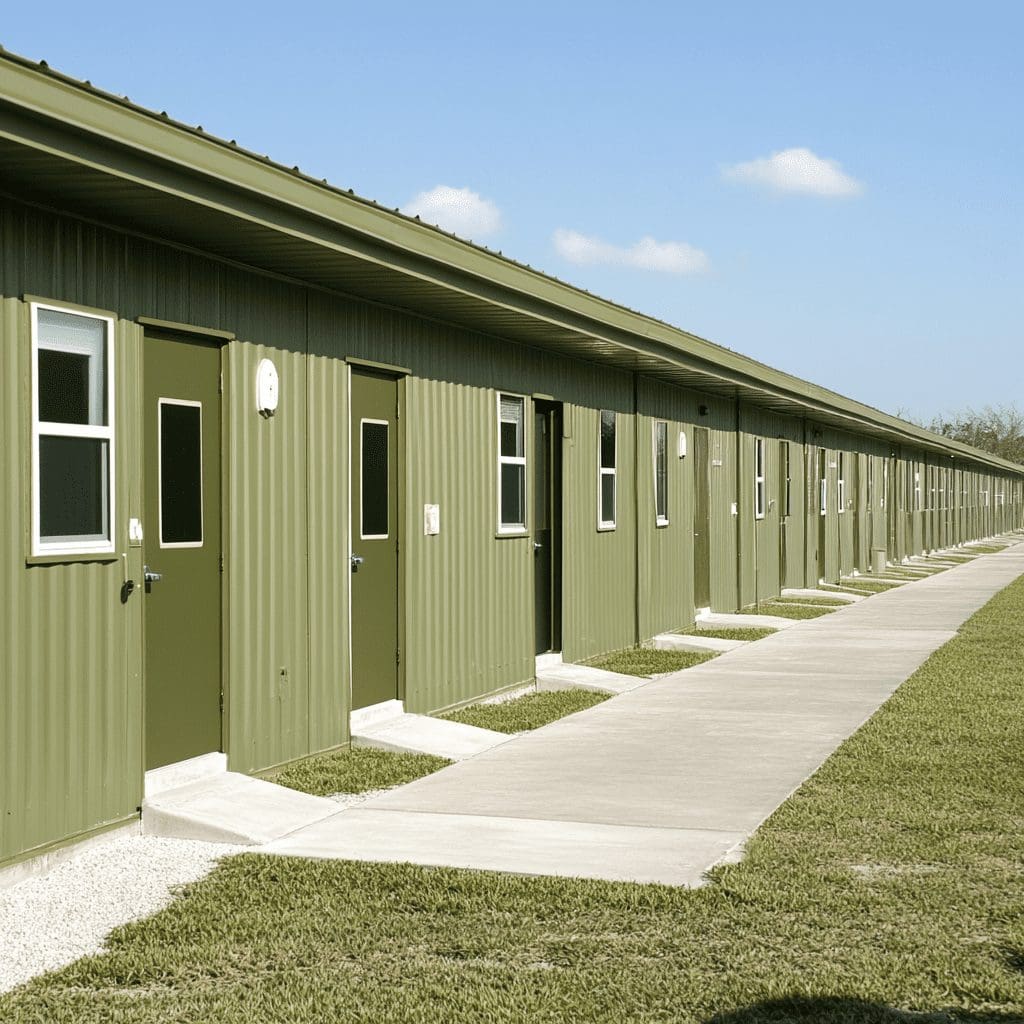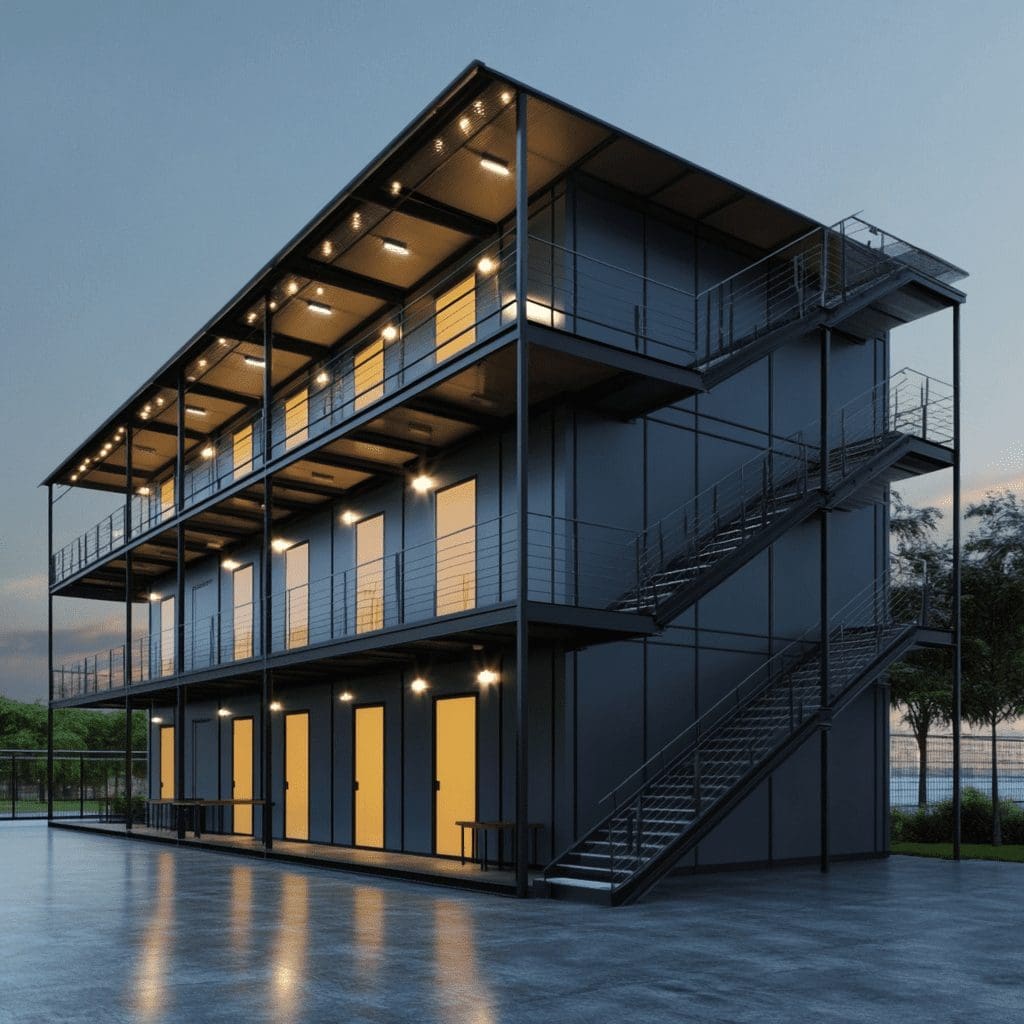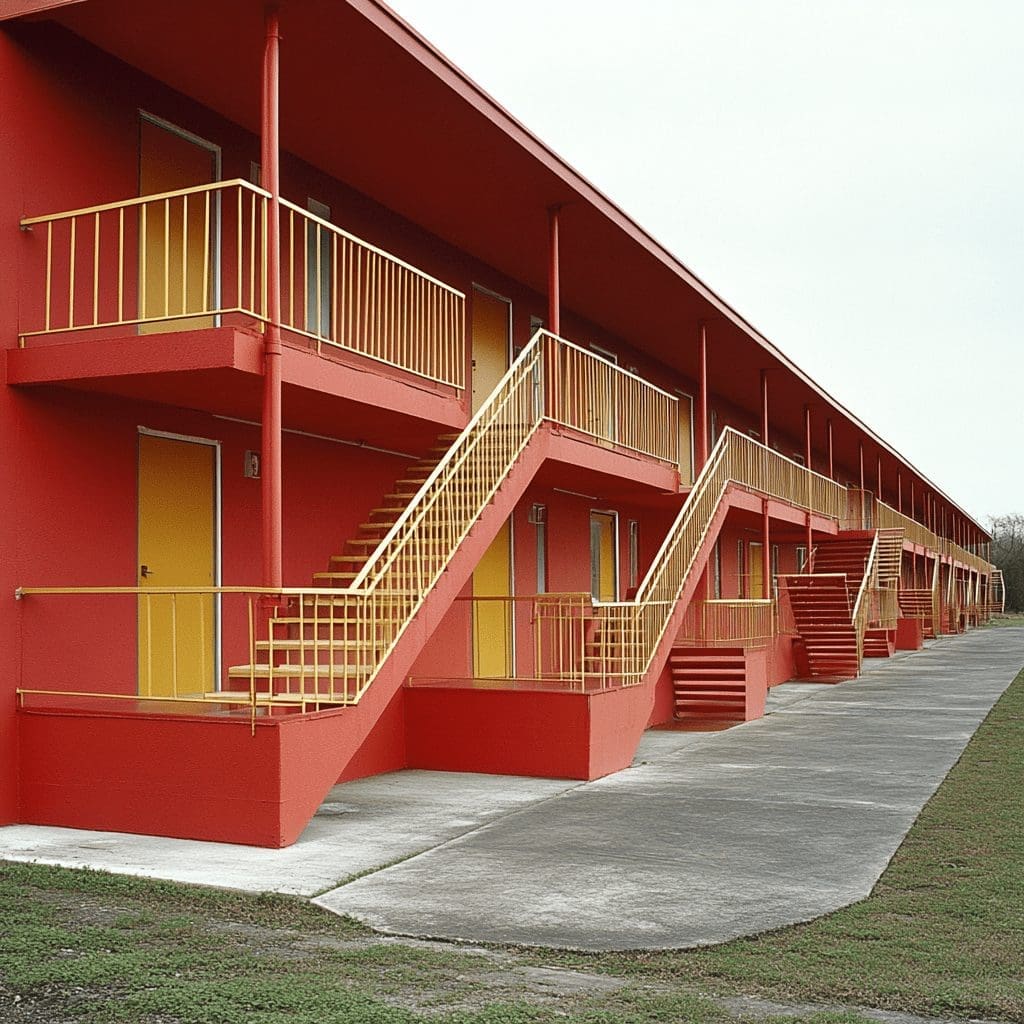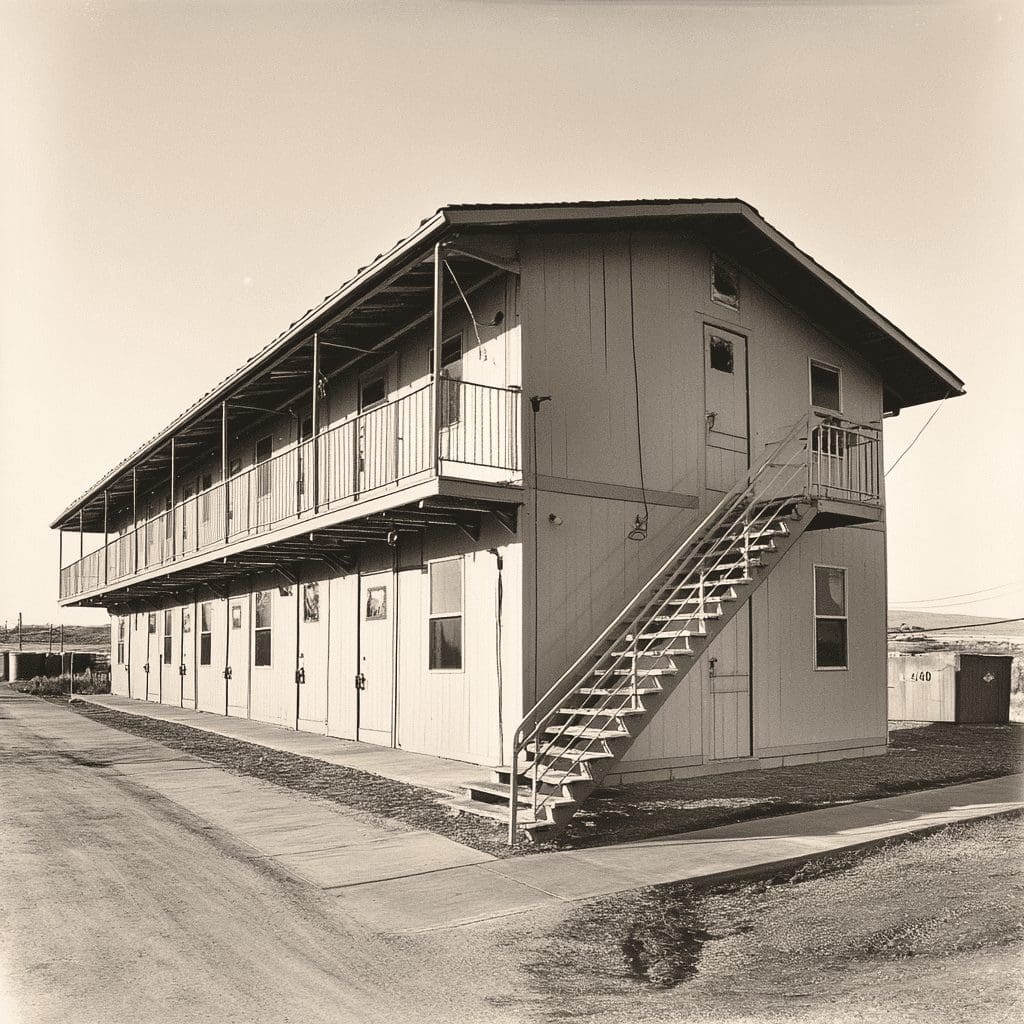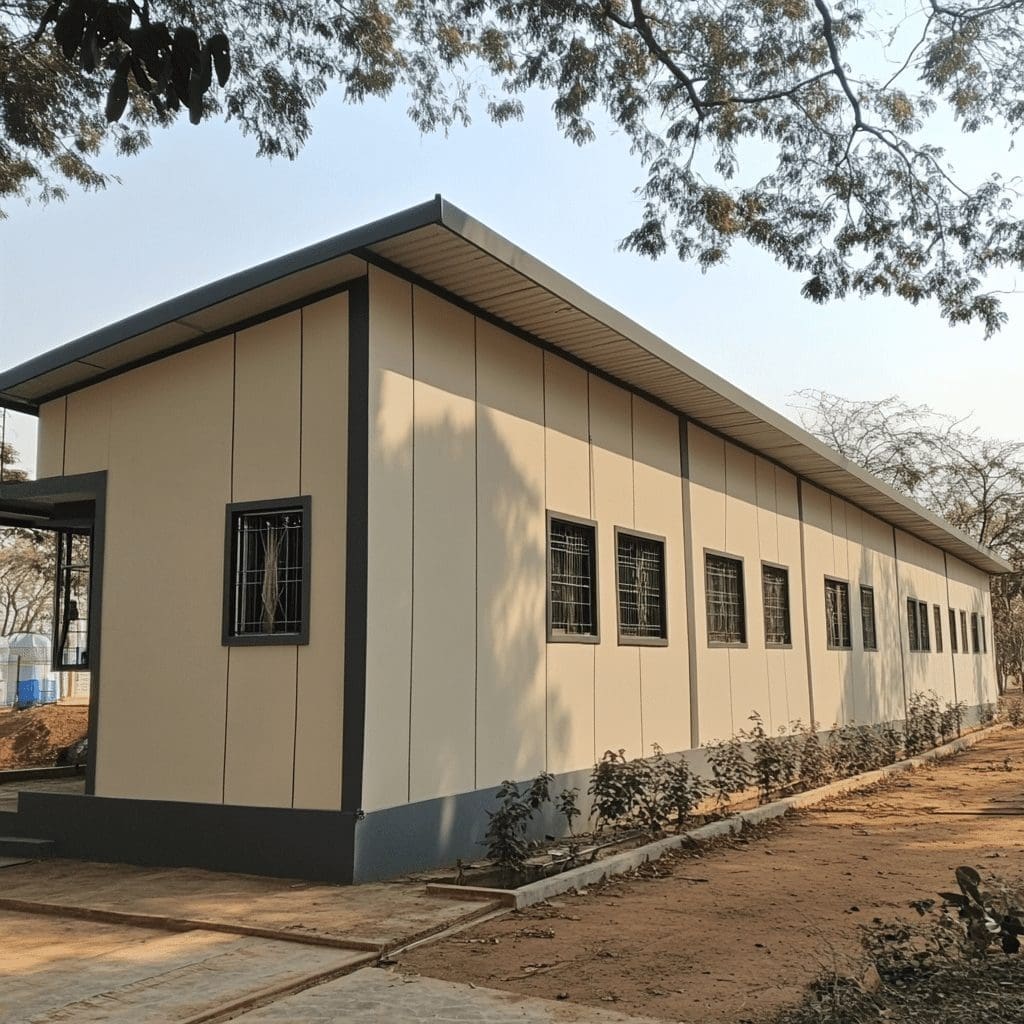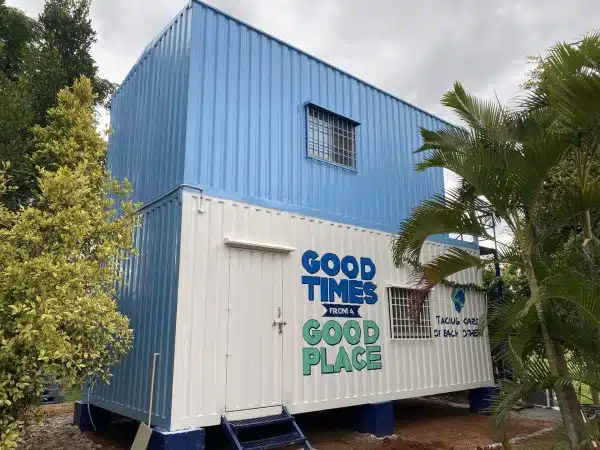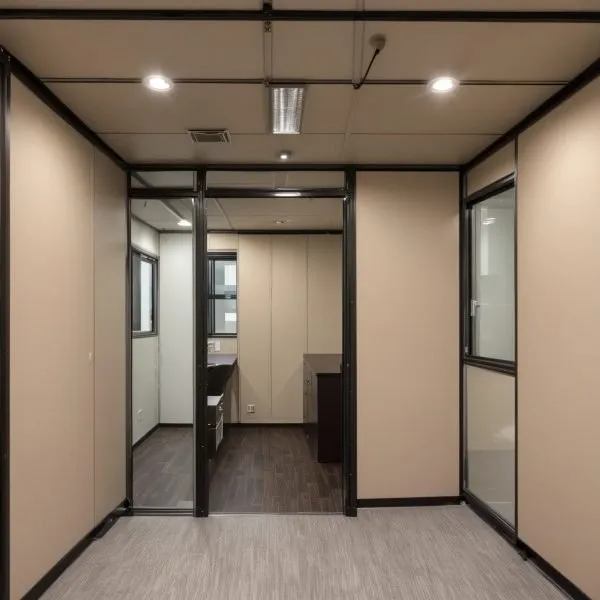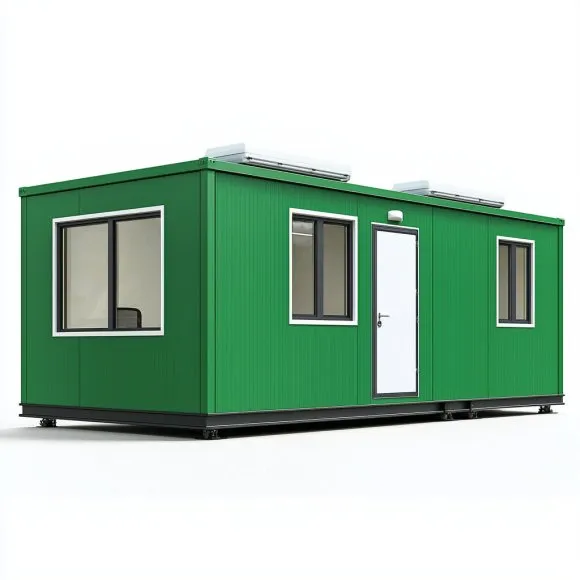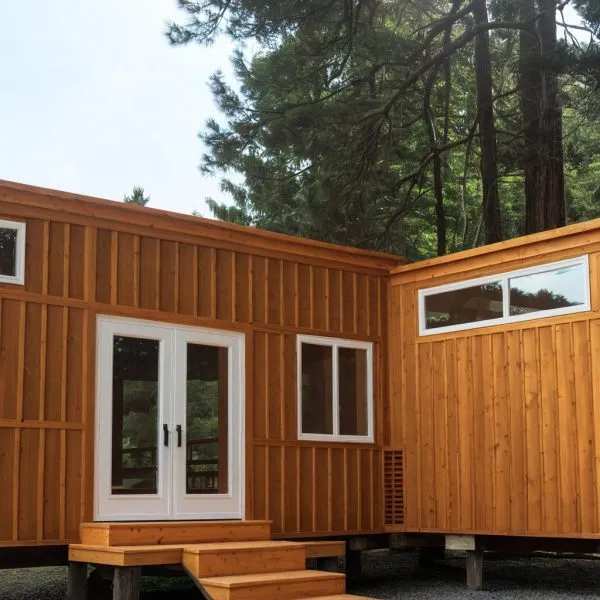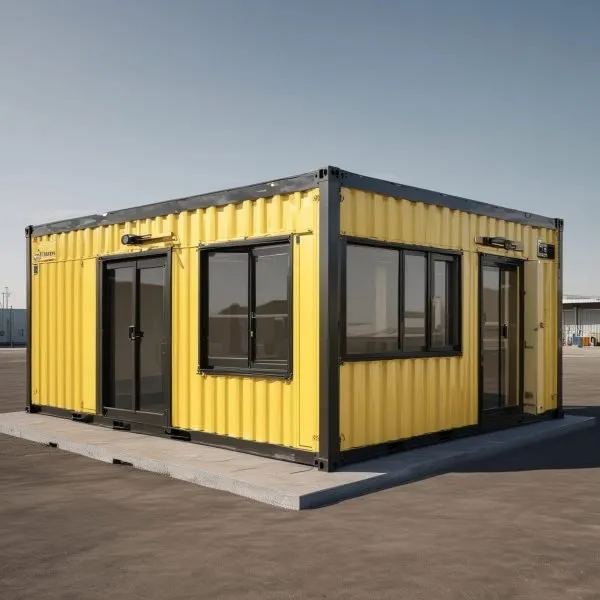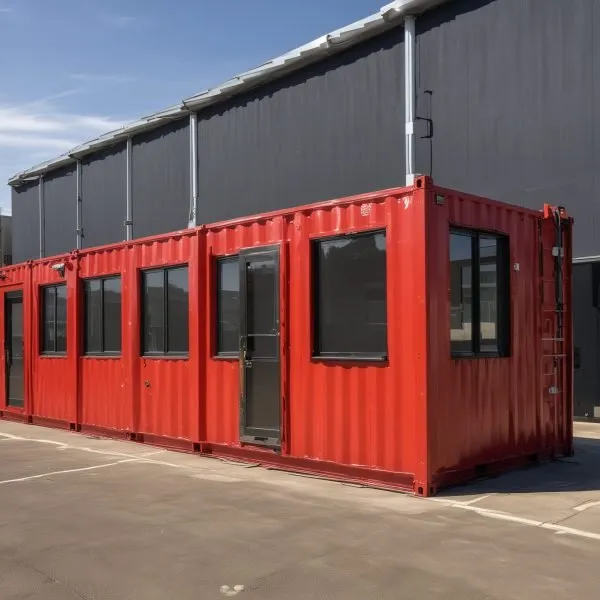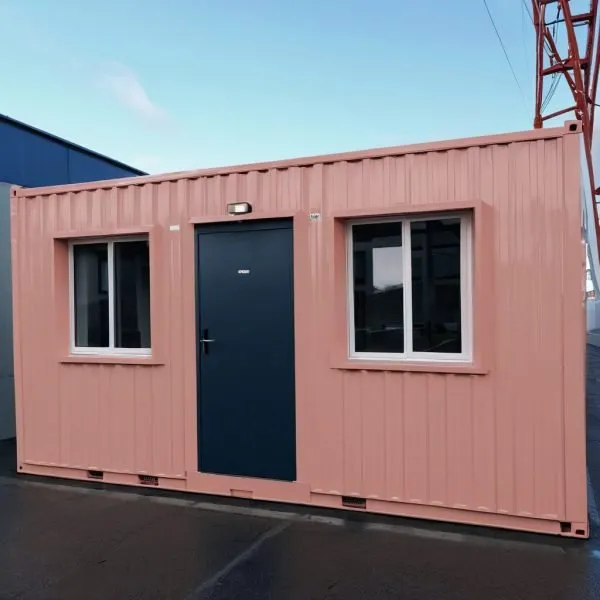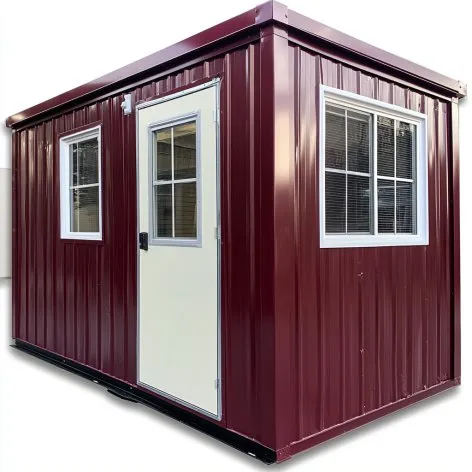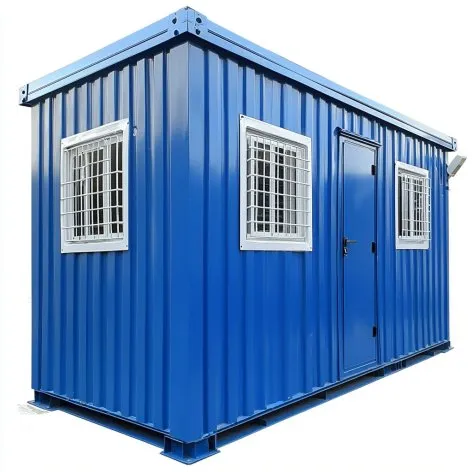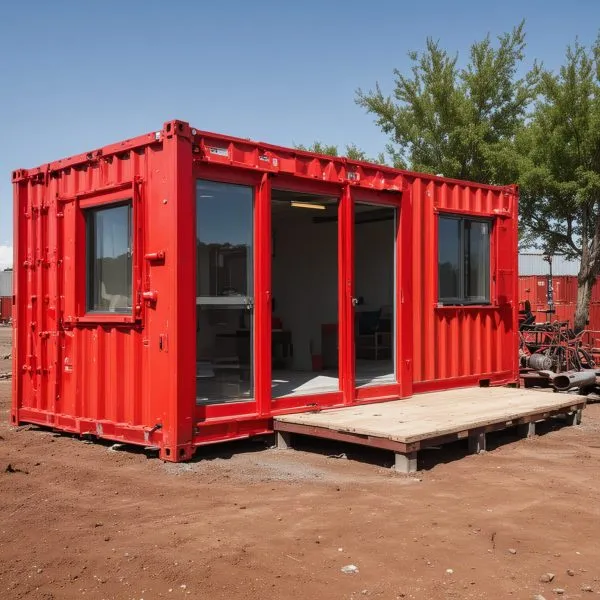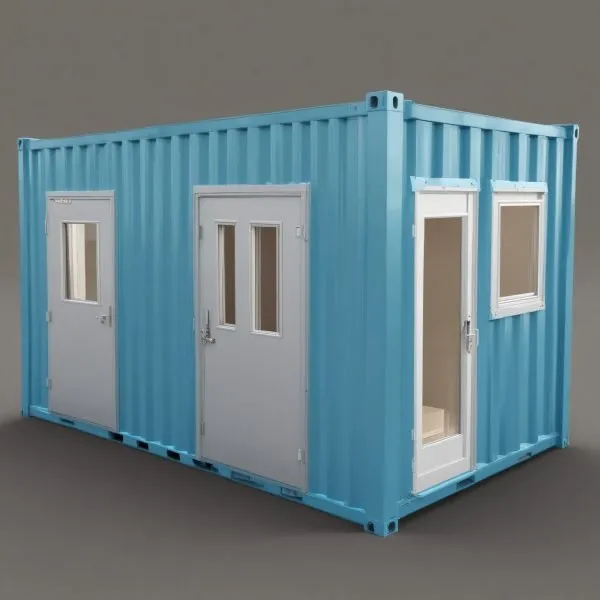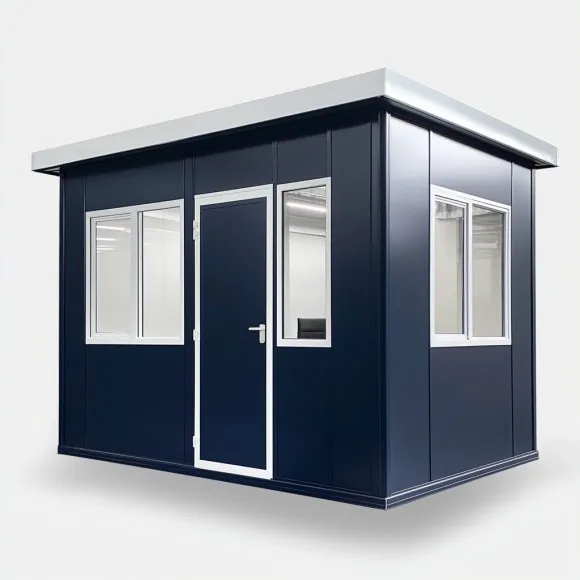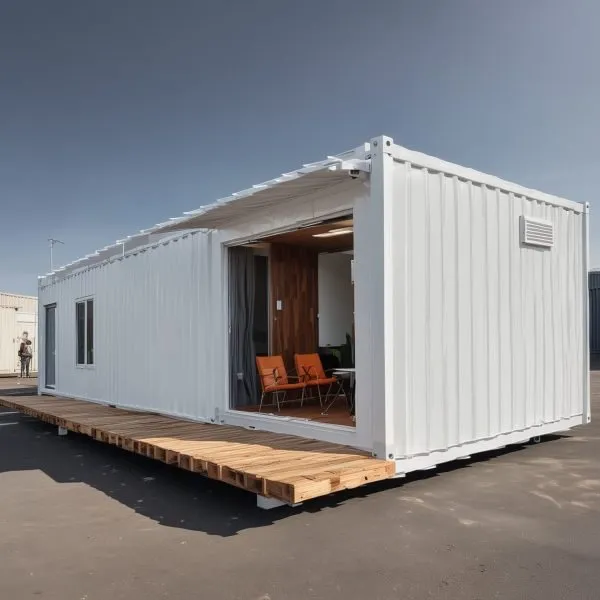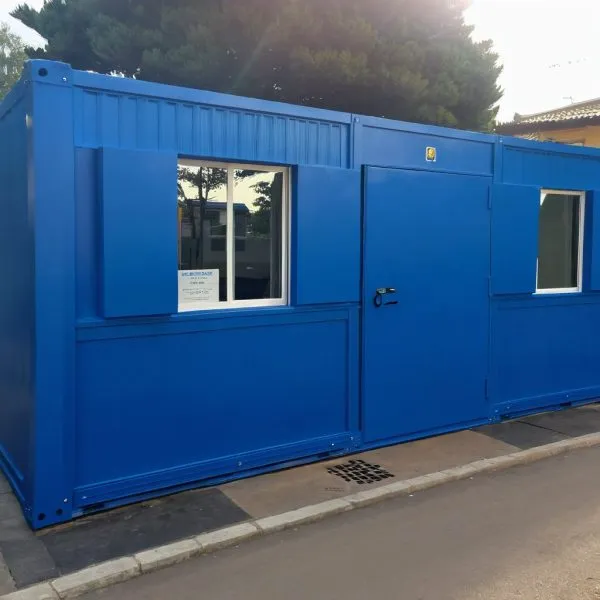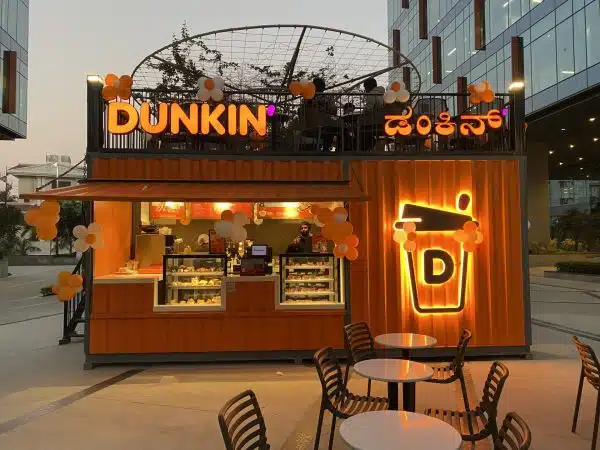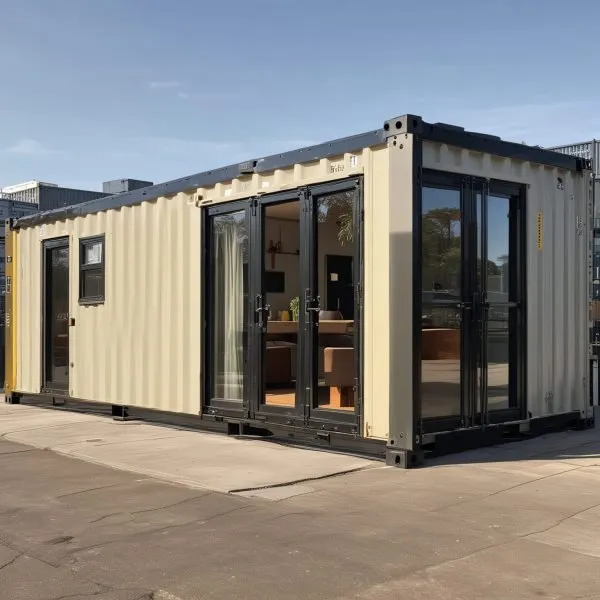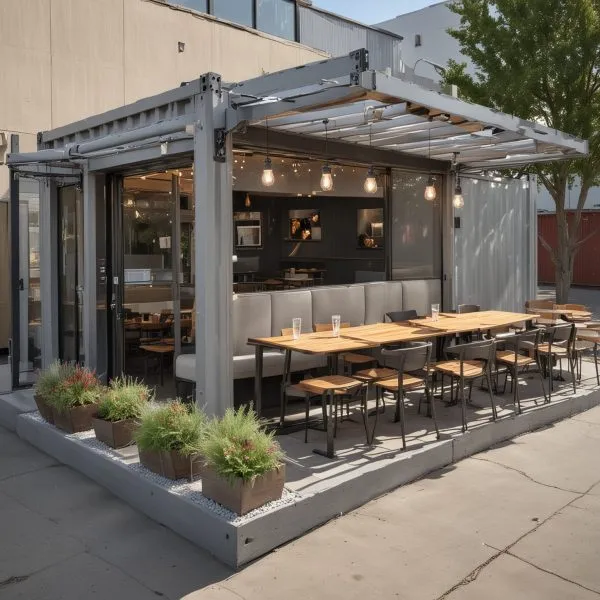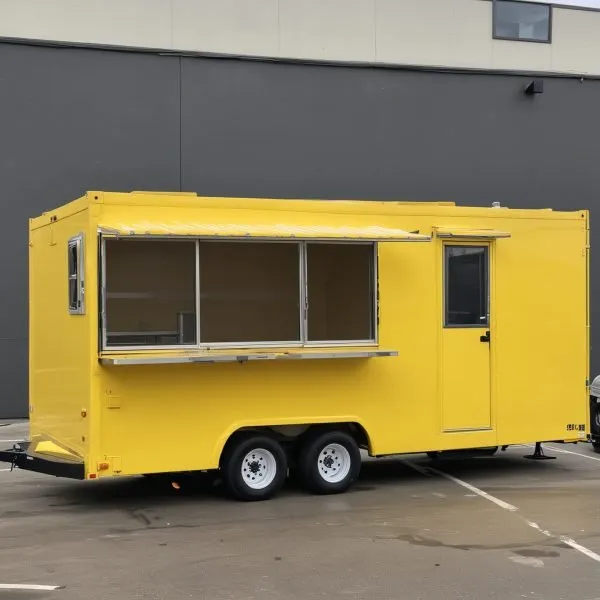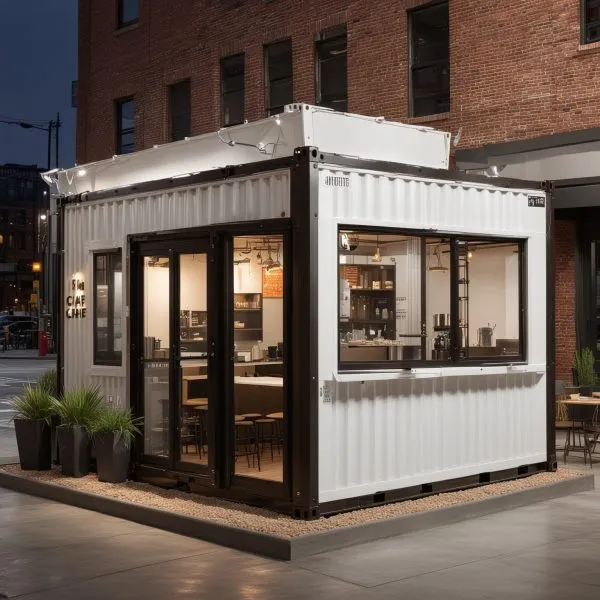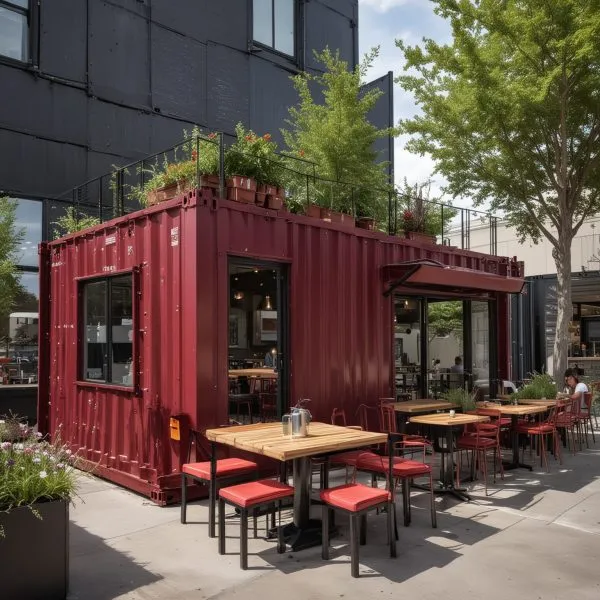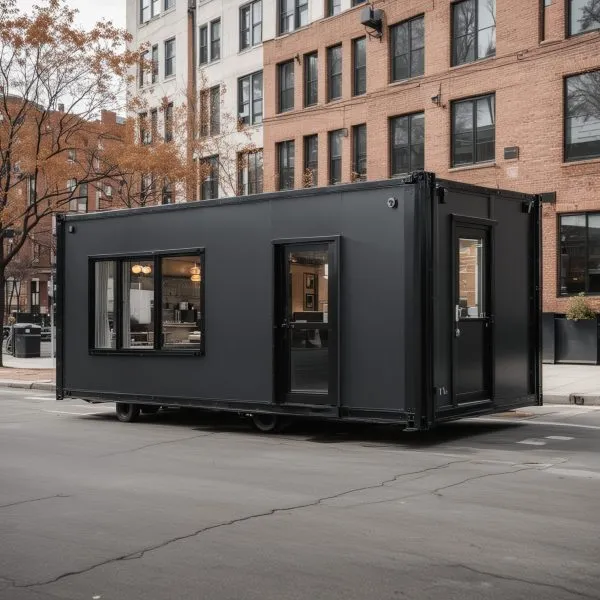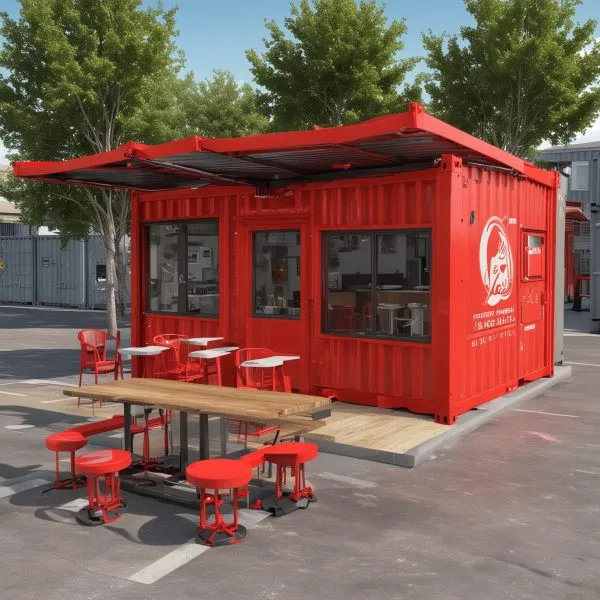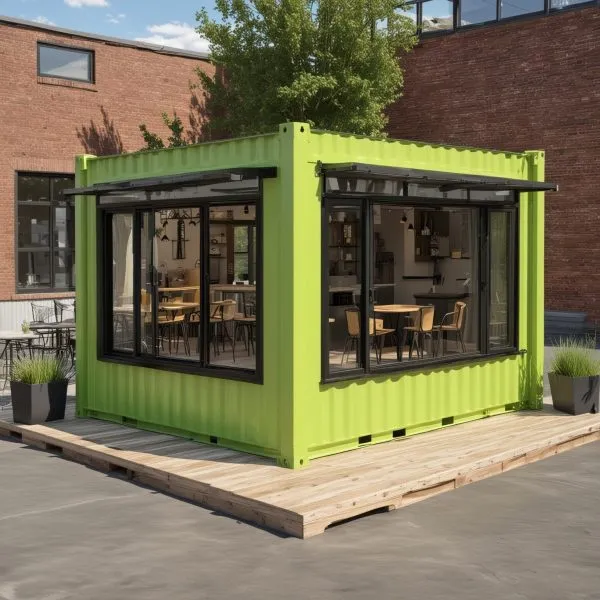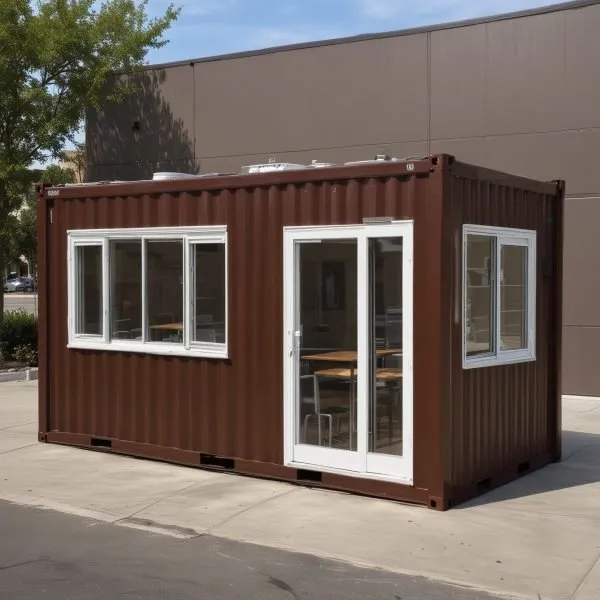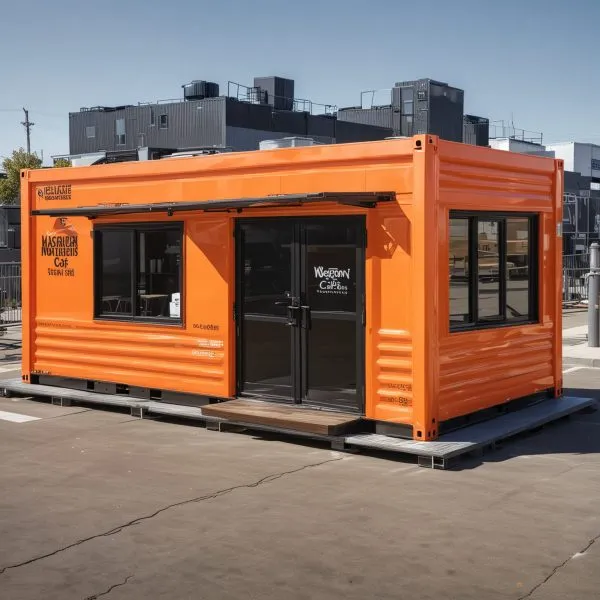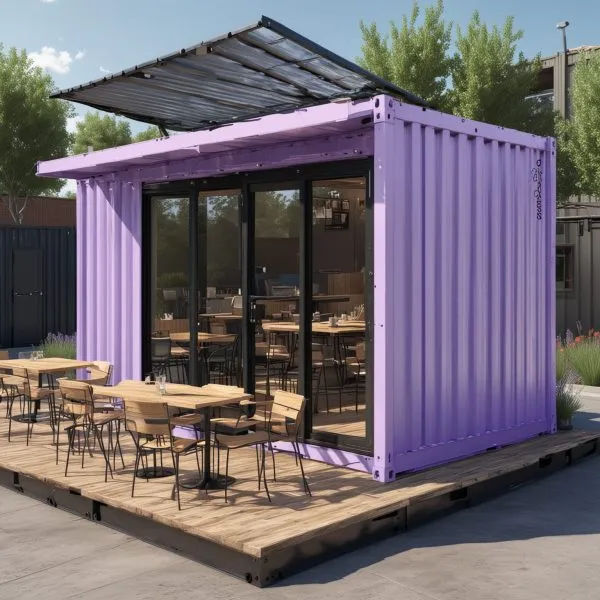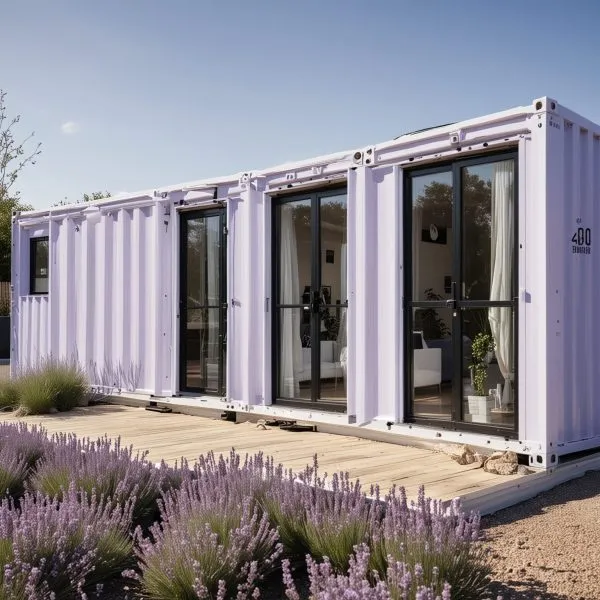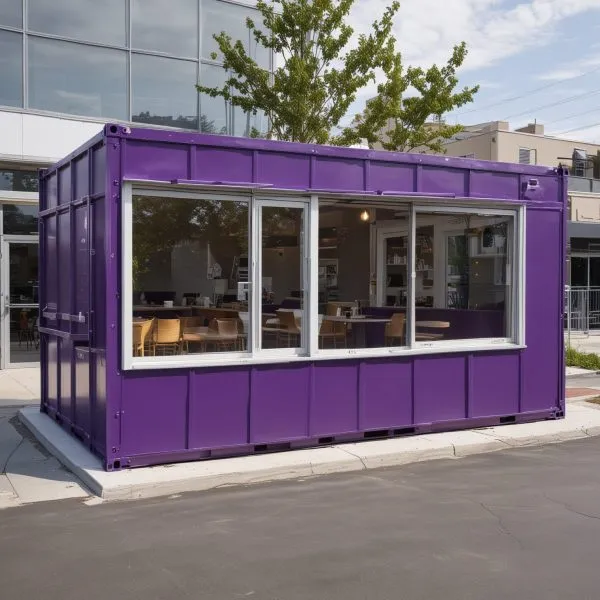Explore Different Types of Containers: Comprehensive Guide to Versatile Container Solutions

In the ever-evolving world of global trade and logistics, containers have become the backbone of modern transportation. But have you ever wondered about the diverse range of container types and their specialized applications? From standard dry containers to specialized temperature-controlled units, the world of containerization offers a wealth of versatile solutions to meet the demands of various industries.
What sets apart the different types of containers, and how do they cater to the unique needs of businesses across sectors? Unraveling the intricacies of containerization promises to unveil new possibilities in the realm of efficient, secure, and sustainable cargo transportation. Join us as we embark on a comprehensive exploration of the diverse container landscape, empowering you with the knowledge to make informed decisions for your logistics operations.
Key Takeaways
- Discover the wide array of container types, from standard dry units to specialized solutions for temperature-sensitive and oversized cargo.
- Understand how containerization has revolutionized global trade, with over 90% of the world’s physical goods transported by sea in containers.
- Explore the pivotal role of standard dry containers, which comprise around 90% of the global container fleet used in ocean shipping.
- Delve into the specialized applications of refrigerated, open-top, and high cube containers to cater to diverse industry needs.
- Discover the latest innovations in container design, including sustainable materials and smart technologies for enhanced efficiency and monitoring.
As the world of global logistics continues to evolve, the versatility of containers remains a crucial factor in ensuring the seamless flow of goods across borders. From the humble beginnings of wooden crates to the modern steel giants, the history of containerization is a testament to the transformative power of innovation. Join us as we uncover the stories behind these silent workhorses of international trade and explore the myriad of container types that are shaping the future of logistics.
Understanding the Evolution of Container Solutions in Global Trade
The history of shipping containers can be traced back to the 18th century in England, where rudimentary wooden boxes were used to transport coal. However, it was in 1956 that Malcolm McLean introduced the modern intermodal shipping container, revolutionizing global trade. McLean’s innovation was a corrugated steel container designed for easy movement using cranes, a stark contrast to the wooden boxes of the past.
From Wooden Boxes to Modern Steel Giants
Prior to McLean’s breakthrough, the shipping industry relied on manual loading and unloading processes, which were time-consuming and inefficient. The introduction of the standardized steel container transformed cargo handling methods, enabling businesses to expand their reach to distant markets and facilitating the exchange of goods on an unprecedented scale. Today, 90% of non-bulk cargo worldwide is transported via containers, showcasing the vital role of containerized cargo in global trade.
Malcolm McLean’s Revolutionary Impact
The standardization of containers, pioneered by Malcolm McLean, was a game-changer for the shipping industry. Mega-ships in the shipping industry can now carry over 20,000 twenty-foot equivalent units (TEUs), highlighting the significant increase in vessel capacity post-containerization. This innovation has revolutionized the way goods are transported, leading to faster port turnaround times, reduced transportation costs, and increased supply chain agility for businesses.
Standardization in Modern Logistics
The widespread adoption of standardized containers has been a crucial factor in driving economic growth and development worldwide. Major port hubs like Shanghai, Singapore, and Rotterdam have expanded their infrastructures to accommodate the rising container traffic, which in turn dictates global trade routes and shipping costs. Modern container ships are equipped with advanced navigation systems and eco-friendly technologies, allowing for increased efficiency and reduced environmental impact in transportation.

The Significance of Containerization in Modern Logistics
Containerization has revolutionized global trade and logistics, serving as the backbone of international commerce. These standardized shipping units facilitate the seamless movement of various commodities, from consumer electronics to raw materials, across vast distances. Understanding the common types of containers in logistics is crucial for efficient logistics management, ensuring goods are transported safely and effectively from origin to destination.
The impact of containerization is profound. It has enabled businesses to expand their reach to distant markets and played a pivotal role in driving economic growth and development worldwide. Containerization accounts for roughly 60% of all world ocean trade, reducing shipping times significantly compared to traditional methods and requiring fewer people to handle goods.
The widespread adoption of container office solutions has further underscored the versatility of these modular units. Businesses can now leverage repurposed shipping containers to establish temporary or permanent office in a container setups, maximizing space and mobility. This innovative use of containers showcases their adaptability beyond the realm of logistics, making them an increasingly valuable asset in modern infrastructure and construction projects.
As the global supply chain continues to evolve, the significance of containerization in modern logistics remains undeniable. From streamlining cargo transportation to enabling new applications, these standardized units have transformed the way the world conducts business, driving efficiency, and fostering economic prosperity across industries and borders.

Different Types of Containers: Core Classifications and Applications
Shipping containers come in a wide array of types and sizes to ensure safe and efficient product delivery across the global trade landscape. From the standard dry containers to specialized solutions, each variant serves distinct industry needs. Understanding the diverse container classifications is crucial for optimizing logistics and unlocking the full potential of portable office containers, modern office spaces, and efficient container offices.
Standard Dry Containers
The workhorse of the container industry, standard dry containers make up around 90% of the global container fleet. These general-purpose units provide a versatile and reliable solution for transporting a vast array of goods, from raw materials to finished products. Available in standardized sizes such as 20ft and 40ft, dry containers offer a cost-effective and durable option for businesses seeking efficient portable office containers and modern office spaces.
Specialized Container Solutions
- Flat Rack Containers: Designed to accommodate oversized or heavy cargo, flat rack containers feature collapsible sides and a sturdy, open-top design.
- Open-Top Containers: Offering easier access for loading and unloading, open-top containers are ideal for transporting bulky or tall items that cannot fit into standard dry containers.
- Double-Door Containers: Featuring doors on both ends, these containers provide enhanced accessibility and loading efficiency for specific applications.
- High Cube Containers: Boasting an additional foot in height, high cube containers maximize vertical space, making them a popular choice for modern office spaces and efficient container offices.
Temperature-Controlled Units
For the transportation of temperature-sensitive cargo, such as perishable goods, pharmaceuticals, and chemicals, specialized insulated and refrigerated containers are essential. These temperature-controlled units maintain precise temperature and humidity levels, ensuring the integrity and safety of the transported materials. They play a vital role in preserving the quality of products during long-distance shipping and distribution.

Standard Dry Storage Containers: The Industry Workhorses
Standard dry storage containers are the most commonly used shipping containers, playing a pivotal role in global trade. These versatile containers are constructed from robust steel, providing protection against harsh environmental conditions and the ability to transport a wide range of cargo, including consumer goods, machinery, and raw materials.
These industry workhorses typically come in 20-foot and 40-foot sizes, with standardized dimensions for efficient stacking and transport. Their weatherproof construction and secure locking systems ensure the safe delivery of goods, while their versatility caters to the needs of various industries, including retail, e-commerce, manufacturing, construction, and automotive.
The standardization of dry container dimensions, as regulated by the International Organization for Standardization (ISO), has significantly improved the efficiency of the shipping industry. This has led to reduced loading and unloading times, minimized wastage of space, and enhanced overall logistics operations.
From sustainable office designs to prefab office cabins and versatile container workspaces, these standard dry storage containers serve as the backbone of modern supply chains, ensuring the seamless movement of goods worldwide.
Whether transporting consumer electronics, industrial machinery, or construction materials, standard dry containers demonstrate their versatility and reliability, making them the industry workhorses that keep global trade flowing.
Refrigerated Containers: Preserving Perishable Cargo
Refrigerated containers, also known as reefers, play a crucial role in the transportation of temperature-sensitive goods. These specialized containers are equipped with advanced refrigeration systems, state-of-the-art insulation, and ventilation to maintain precise temperature levels and optimal air quality. Reefers are essential for preventing spoilage and preserving the quality of perishable items, such as fruits, vegetables, meats, and pharmaceuticals.
Temperature Control Systems
Reefer containers rely on a thermodynamic process called the vapor-compression cycle to provide precise temperature control. This technology allows them to maintain specific temperature ranges, typically between -30°C (-22°F) and +30°C (86°F), depending on the cargo requirements. The containers are equipped with real-time monitoring capabilities, ensuring the temperature is constantly regulated during transit.
Industry Applications
Refrigerated shipping enables various industries to import and export temperature-sensitive goods globally, ensuring the availability of frozen and fresh products for customers worldwide. Reefers are commonly used to transport food products like fruits, vegetables, meat, seafood, and dairy, as well as pharmaceutical products that require strict temperature control to preserve their efficacy.
Maintenance Requirements
Proper maintenance is crucial for the efficient operation of reefer containers. Common issues such as leakage, damage to pressure lines, electrical malfunctions, and weakened refrigerants must be addressed promptly. Regular inspections, container monitoring, and skilled technicians are essential to ensure the reliable and safe transportation of perishable cargo.

Reefer containers have played a significant role in the growth of the cold chain logistics industry, enabling the successful export of temperature-sensitive goods to international markets. By maintaining precise temperature control, reefers have contributed to the diversification of export portfolios, reducing dependence on a limited range of products and increasing economic resilience.
Open Top and Flat Rack Solutions for Oversized Cargo
In the world of global logistics, transporting oversized or bulky cargo can be a significant challenge. However, the versatility of open top and flat rack containers offers a solution to this conundrum. These specialized container solutions are designed to handle goods that exceed the height limitations of conventional shipping containers.
Open top containers feature a removable tarpaulin cover and roof bows, allowing for easy loading and unloading using cranes or other lifting equipment. This makes them an ideal choice for transporting heavy machinery, industrial equipment, or even stacks of timber that are too tall for standard containers. Meanwhile, flat rack containers have removable sides, providing the flexibility to secure irregularly shaped items securely during transit.
These specialized containers come in both 20-foot and 40-foot sizes, catering to a wide range of cargo requirements. Flat rack containers are particularly well-suited for the transportation of oversized and heavy goods, thanks to their robust construction and ability to support substantial loads. Open top containers, on the other hand, excel in handling bulky cargo that cannot be easily accommodated within a closed container.
Whether you’re transporting affordable prefab houses, eco-friendly container houses, or durable housing options, open top and flat rack solutions offer a flexible and reliable option for moving oversized or irregularly shaped goods across the global supply chain.

Specialized Tank Containers for Liquid Transportation
As the global logistics landscape continues to evolve, specialized tank containers have emerged as a vital component in the efficient transportation of liquid cargo. These durable, stainless steel containers are designed to handle a wide range of liquid products, from chemicals and fuels to dairy and liquid food items. Adhering to stringent international standards set by the International Organization for Standardization (ISO), these tank containers ensure quality, reliability, and compliance throughout the supply chain.
Safety Features and Compliance
Tank containers are meticulously engineered with safety as a top priority. These specialized units feature robust construction, advanced leak-prevention systems, and comprehensive safety measures to safeguard against spills and environmental risks. Manufacturers invest heavily in research and development to ensure their tank containers meet or exceed the latest industry regulations and safety standards, providing peace of mind for businesses transporting stylish container homes, innovative housing solutions, and customizable container homes.
Types of Liquid Cargo
- Chemicals and Hazardous Materials: Tank containers are essential for the secure transportation of a wide range of chemicals, solvents, and other hazardous liquid materials.
- Fuels and Lubricants: From gasoline and diesel to motor oils and lubricants, tank containers play a crucial role in the efficient distribution of these essential liquid products.
- Dairy and Liquid Food Items: Specialized food-grade tank containers with stainless steel interiors ensure the safe and hygienic transport of dairy products, juices, and other liquid food items.

The versatility of tank containers allows businesses to transport a diverse range of liquid cargo with confidence, leveraging the latest advancements in tank container technology to optimize their supply chain operations and meet the evolving needs of the market.
High Cube Containers: Maximizing Vertical Space
In the world of containerized logistics, high cube containers stand out as a versatile solution for businesses seeking to optimize their cargo transport. These specialized types of containers offer an additional foot of height compared to standard containers, providing valuable extra volume for tall or stacked cargo.
High cube containers typically have a height of 9 feet 6 inches, making them 1 foot taller than standard containers. A 20-foot high cube container boasts a volume capacity of 37.4 cubic meters (1,320 cubic feet) with a tare weight of around 2,300 kg (5,070 lbs). For the larger 40-foot high cube option, the internal volume expands to 76.2 cubic meters or 2,690 cubic feet, with a tare weight of approximately 4,000 kg (8,820 lbs).
These types of containerization solutions are particularly useful for e-commerce businesses with bulky inventory, automotive parts suppliers, and companies shipping light but voluminous goods. The increased vertical space allows for more efficient use of container capacity, potentially reducing shipping costs for certain different types of containers.
- High cube containers offer 8 feet 10 inches (2.69 meters) of internal height, compared to 8 feet 6 inches (2.6 meters) in standard containers.
- They are compatible with intermodal transport, providing transport flexibility and the ability to switch between different modes of transportation seamlessly.
- High cube containers generally have higher rental or purchase costs compared to standard containers, but their increased capacity can translate to cost savings in the long run.
- Cargo types commonly transported in high cube containers include raw materials, refrigerated products, prefabricated units, and furniture.
By adopting high cube types of container solutions, businesses can achieve cost efficiency, optimize logistics, and meet evolving market demands for enhanced cargo transportation. The versatility and space-saving capabilities of these specialized types of containers make them an increasingly popular choice in the rapidly evolving world of modern logistics.

Insulated and Thermal Container Solutions
In the realm of global logistics, insulated and thermal container solutions play a vital role in transporting temperature-sensitive goods. These specialized containers are designed to create a stable environment inside, shielding products from fluctuating external conditions and preserving their integrity throughout the shipping journey.
Insulated containers typically feature a double-wall structure, with insulation sandwiched between the inner and outer layers. This construction helps to minimize heat transfer, ensuring that the contents remain at the desired temperature. These containers come in various types, catering to the specific needs of different industries and cargo.
- Regular Ice Totes for food and beverage transportation
- Dry Ice Totes for frozen products
- Specialty Containers for onboard handling or chilling applications
Each type of insulated container is engineered to provide optimal protection for its intended cargo, whether it’s preserving the freshness of perishable goods or maintaining the stability of delicate medical supplies. By creating a controlled environment, these types of containers in logistics play a crucial part in the cold chain, ensuring that temperature-sensitive products arrive at their destination in pristine condition.

Insulated and thermal container solutions are not limited to just food and pharmaceuticals. They are widely used across various industries, including chemicals, electronics, and even art transportation, where maintaining specific temperature ranges is essential. The versatility of these types of containerization in logistics makes them indispensable in modern global trade, where the safe and reliable movement of goods is paramount.
Double Door Containers: Enhanced Accessibility Options
Shipping containers have become increasingly versatile, evolving from their traditional use in global trade to innovative applications as homes, offices, and storage solutions. Among the specialized container types, double door or tunnel containers offer enhanced accessibility features that make them highly adaptable for various logistics and on-site needs.
Design Features
Double door containers are equipped with doors at both ends, allowing for easy loading and unloading from either side. Available in standard 20-foot and 40-foot sizes, these containers provide dual access, durability, and enhanced security features. Their unique design makes them suitable for transporting goods that require easy access, such as pallets and oversized items.
Loading Efficiency Benefits
The double door design of these containers allows for improved operational efficiency. By facilitating access from both ends, double door containers enable faster and more organized loading and unloading of cargo. This feature is particularly beneficial for industries that regularly handle large or bulky items, as it streamlines the logistics process and reduces handling time.
Beyond their practical advantages in logistics, double door containers are also finding innovative applications in diverse sectors, serving as on-site storage solutions, makeshift tunnels, and even as components in home renovations and emergency infrastructure projects.

With their enhanced accessibility, versatility, and customization potential, double door containers continue to be an increasingly popular choice among shippers, construction companies, and individuals seeking versatile storage and transportation solutions.
Innovative Container Designs for Modern Applications
The world of shipping containers is undergoing a remarkable transformation, with innovative designs and cutting-edge features revolutionizing the way goods are transported across the globe. These modern containers are not just sturdy workhorses, but also versatile solutions tailored to meet the evolving needs of the logistics industry.
One of the most significant advancements in container technology is the growing emphasis on customizability. Containers can now be designed and engineered to meet specific storage or commercial requirements, such as shipping containers for homes, office container for sale, or even containers as offices. This level of customization allows businesses to optimize their logistics operations and cater to the unique needs of their customers.
Another exciting development in the container industry is the emergence of smart containers equipped with IoT (Internet of Things) integration. These advanced units offer real-time tracking and monitoring capabilities, providing enhanced supply chain visibility, improved cargo security, and optimized logistics operations. By leveraging data-driven insights, companies can make more informed decisions, reduce operational inefficiencies, and ensure the seamless movement of goods.
In addition to these technological advancements, container design is also incorporating sustainability considerations. Manufacturers are exploring the use of eco-friendly materials and construction methods, reducing the environmental impact of container-based solutions. This shift towards greener practices aligns with the growing demand for sustainable and responsible logistics solutions.
The continued evolution of container designs is a testament to the industry’s commitment to innovation and meeting the ever-changing needs of global trade. By embracing these advancements, businesses can unlock new opportunities, streamline their operations, and contribute to a more efficient and sustainable logistics landscape.
Sustainable and Eco-Friendly Container Solutions
The container industry is embracing eco-friendly solutions to reduce environmental impact. Manufacturers are turning to renewable and biodegradable materials for container construction, minimizing waste and promoting a circular economy. Container designs are becoming more efficient, with minimalist approaches to packaging that reduce unnecessary layers. Smart packaging technologies, such as intelligent labels and QR codes, provide consumers with product information while promoting recycling practices. These sustainable initiatives aim to balance the needs of global trade with environmental conservation efforts.
Green Materials and Construction
Leading container providers are utilizing eco-friendly materials like bioplastics, recycled steel, and sustainable wood sources for their container office solutions and portable office containers. These green materials not only reduce the environmental impact but also provide durable and long-lasting products. The focus on sustainable construction methods ensures a smaller carbon footprint throughout the product lifecycle.
Environmental Impact Reduction
Innovative office in a container designs prioritize efficient resource utilization and waste management. Smart packaging techniques, such as intelligent labeling and QR codes, empower consumers to make informed decisions about recycling and disposal. By promoting a circular economy, these eco-friendly container solutions contribute to a more sustainable future for global trade and logistics.
- Green Business Benchmark Certification Level: Platinum
- Location: Florida
- Date: July 24, 2024
- Industry: Promotional Products
- Percentage of Eco-Friendly Packaging Options Among Popular Choices: 72%
- Percentage of Materials that Fall Under Biodegradable Category: 65%
- Percentage of Materials that are Recyclable: 82%
- Percentage of Materials that are Reusable: 75%
The container industry’s commitment to sustainability is driving the adoption of eco-friendly container solutions that minimize waste, reduce carbon footprint, and promote a greener future for global trade.
Conclusion
The diverse world of shipping containers has revolutionized global trade and logistics, offering a wide range of solutions to meet the evolving needs of modern businesses. From standard dry containers to specialized units designed for temperature-sensitive cargo and oversized freight, each container type serves a specific purpose in the supply chain. As the industry continues to innovate, advancements in container design, smart technologies, and sustainable practices are shaping the future of containerized shipping.
For businesses looking to optimize their logistics operations and adapt to the changing landscape of international commerce, understanding the various types of containers and their applications is crucial. Whether you’re seeking to establish efficient modern office spaces, deploy effective container offices, or explore sustainable office designs, the versatility of shipping containers provides a wealth of opportunities to enhance your operations and stay ahead of the curve.
As the global economy becomes increasingly interconnected, the role of containerization in facilitating seamless trade and logistics will only continue to grow. By embracing the diverse offerings in the container industry, businesses can capitalize on the efficiency, reliability, and flexibility that these innovative solutions provide, paving the way for a more connected and prosperous future.
FAQ
What are the different types of containers used in global trade?
The main types of containers used in global trade include standard dry containers, refrigerated containers (reefers), open top and flat rack containers, tank containers, high cube containers, insulated or thermal containers, and double door or tunnel containers. Each type serves specific industry needs and cargo requirements.
How has containerization revolutionized global logistics?
Containerization has transformed global trade by standardizing cargo handling methods and enabling businesses to expand their reach to distant markets. It has facilitated the exchange of goods on an unprecedented scale and played a pivotal role in driving economic growth and development worldwide.
What are the key features and applications of standard dry containers?
Standard dry storage containers are the most widely used shipping containers, suitable for a wide range of cargo. They are constructed from steel, providing robustness and protection against harsh environmental conditions. These containers typically come in 20-foot and 40-foot sizes and are frequently used in the retail, manufacturing, construction, and automotive industries.
What are the benefits of refrigerated (reefer) containers?
Refrigerated containers, or reefers, are essential for transporting perishable goods that require temperature-controlled environments. They feature advanced refrigeration systems, insulation, and ventilation to maintain precise temperature levels and optimal air quality, preventing spoilage and maintaining the quality of items such as fruits, vegetables, meats, and pharmaceuticals.
How do open top and flat rack containers differ from standard containers?
Open top and flat rack containers are specialized solutions for transporting oversized or bulky cargo. Open top containers have a removable tarpaulin cover and roof bows, allowing for loading and unloading using cranes or other lifting equipment. Flat rack containers feature removable sides, providing flexibility in loading and securing irregularly shaped items. These containers are ideal for transporting heavy machinery, industrial equipment, or stacks of timber that exceed the height limitations of conventional containers.
What are the key features and applications of tank containers?
Tank containers are specifically designed for transporting liquids such as chemicals, fuel, dairy products, and liquid food items. They are crafted from durable stainless steel and often insulated and coated for added protection. These containers adhere to stringent international standards set by the International Organization for Standardization (ISO), ensuring quality and reliability. Tank containers offer versatility, environmental friendliness, and efficient loading and unloading processes for liquid cargo.
How do high cube containers differ from standard containers?
High cube containers offer an additional foot of height compared to standard containers, providing valuable extra volume for tall or stacked cargo. These containers are particularly useful for e-commerce businesses with bulky inventory, automotive parts suppliers, and companies shipping light but voluminous goods. The increased vertical space allows for more efficient use of container capacity, potentially reducing shipping costs for certain types of cargo.
What are the benefits of insulated or thermal containers?
Insulated or thermal containers are designed to create a stable environment inside, shielding goods from temperature fluctuations and external conditions. These containers typically have a double-wall structure with insulation sandwiched between the inner and outer layers. They are ideal for transporting temperature-sensitive products that don’t require active refrigeration, such as food and beverage items, frozen products, and specialty cargo that requires on-board handling or chilling.
How do double door or tunnel containers differ from standard containers?
Double door or tunnel containers are specialized shipping containers with doors at both ends, allowing for easy loading and unloading from either side. This unique feature makes them highly versatile for various logistics and storage needs. They are particularly suitable for transporting goods that require easy access from both ends, such as pallets and oversized items, and can also serve well as on-site storage solutions where access from either end can improve operational efficiency.
What are the latest innovations in container technology and design?
Innovations in container technology and design are revolutionizing the way goods are transported across the globe. Modern containers are equipped with cutting-edge features, such as smart containers with IoT integration for real-time tracking and monitoring, to enhance supply chain visibility, improve cargo security, and optimize logistics operations. Manufacturers are also turning to renewable and biodegradable materials for container construction, minimizing waste and promoting a circular economy.
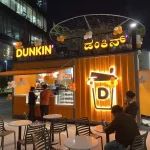 Container Cafe
Container Cafe